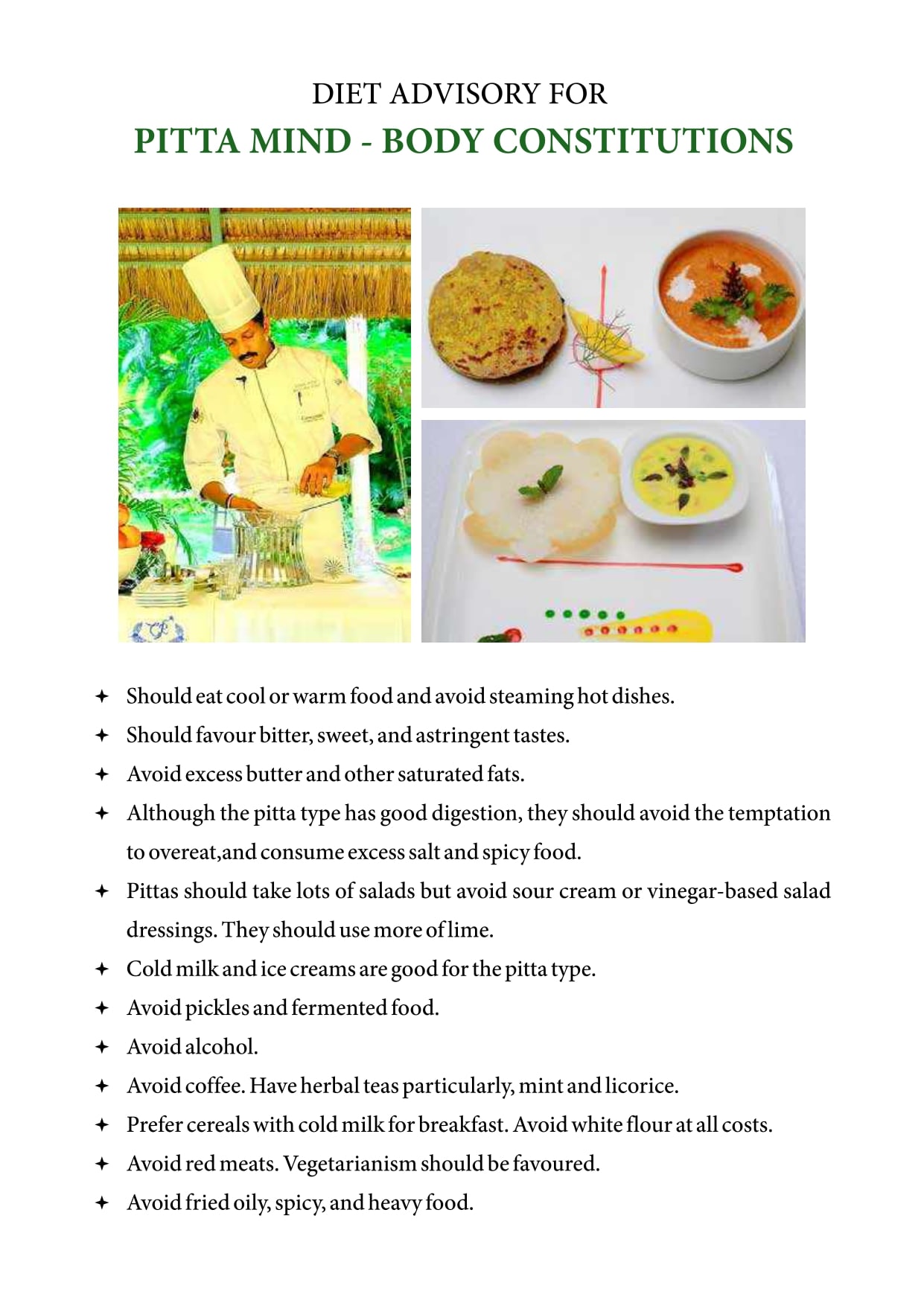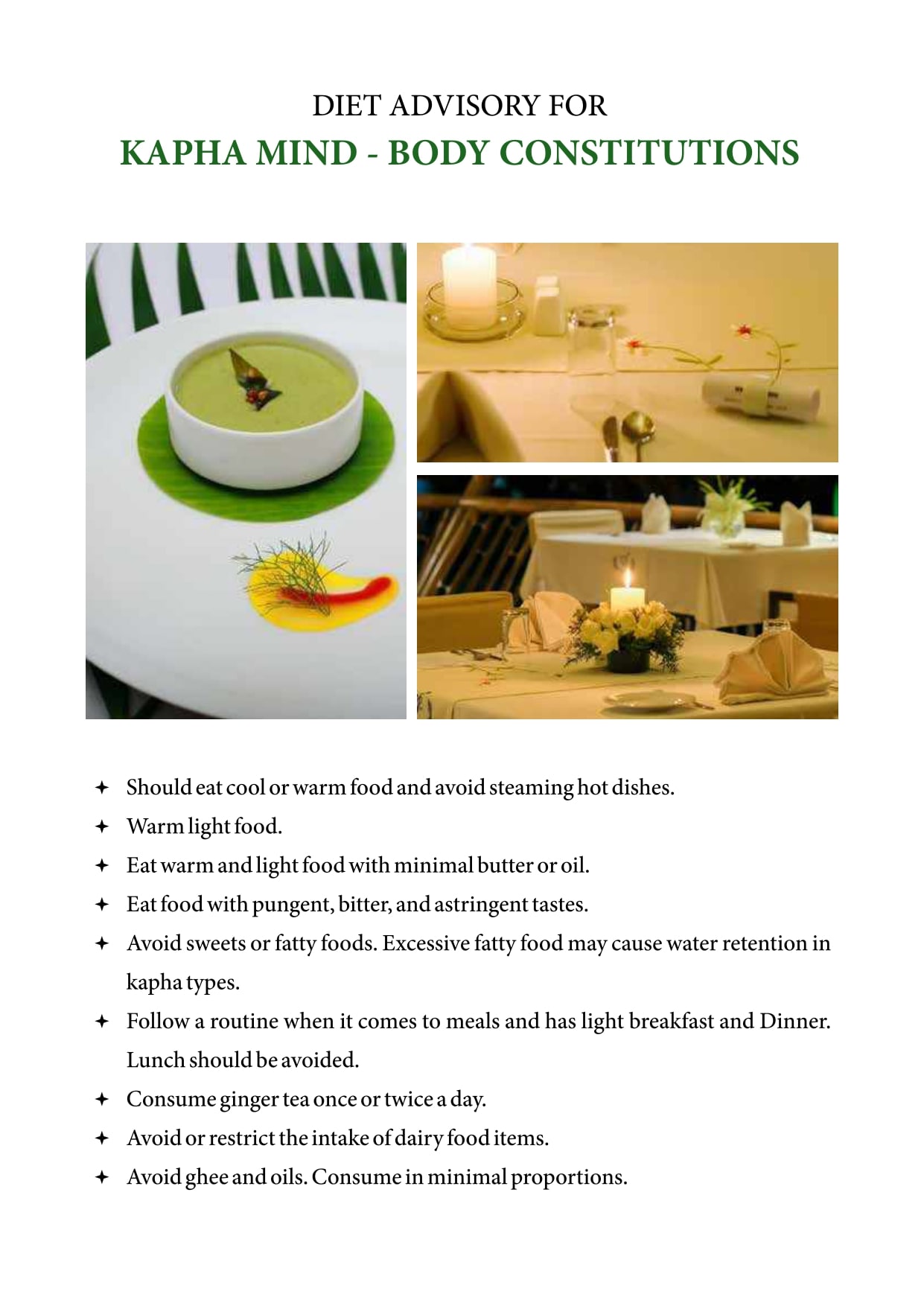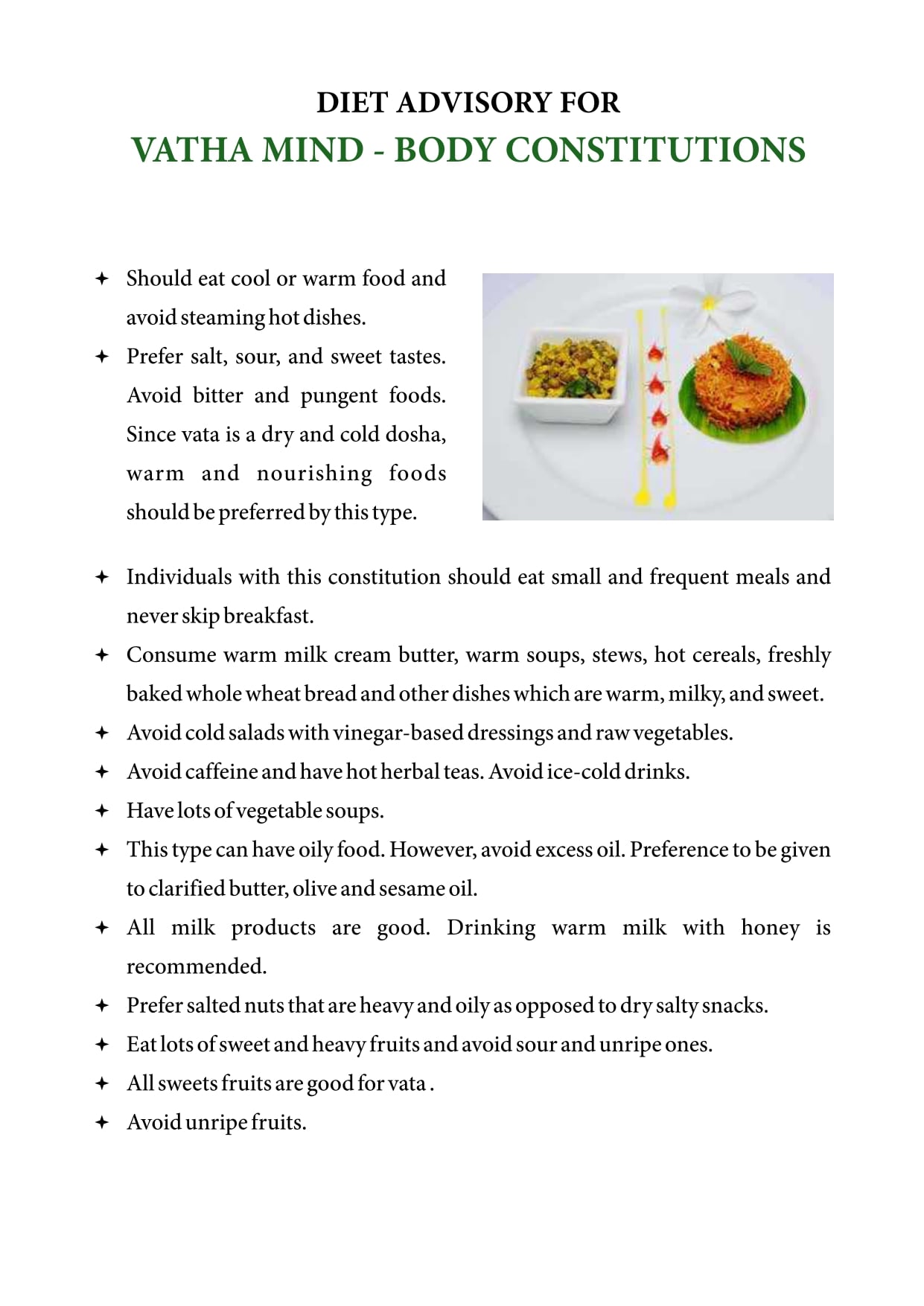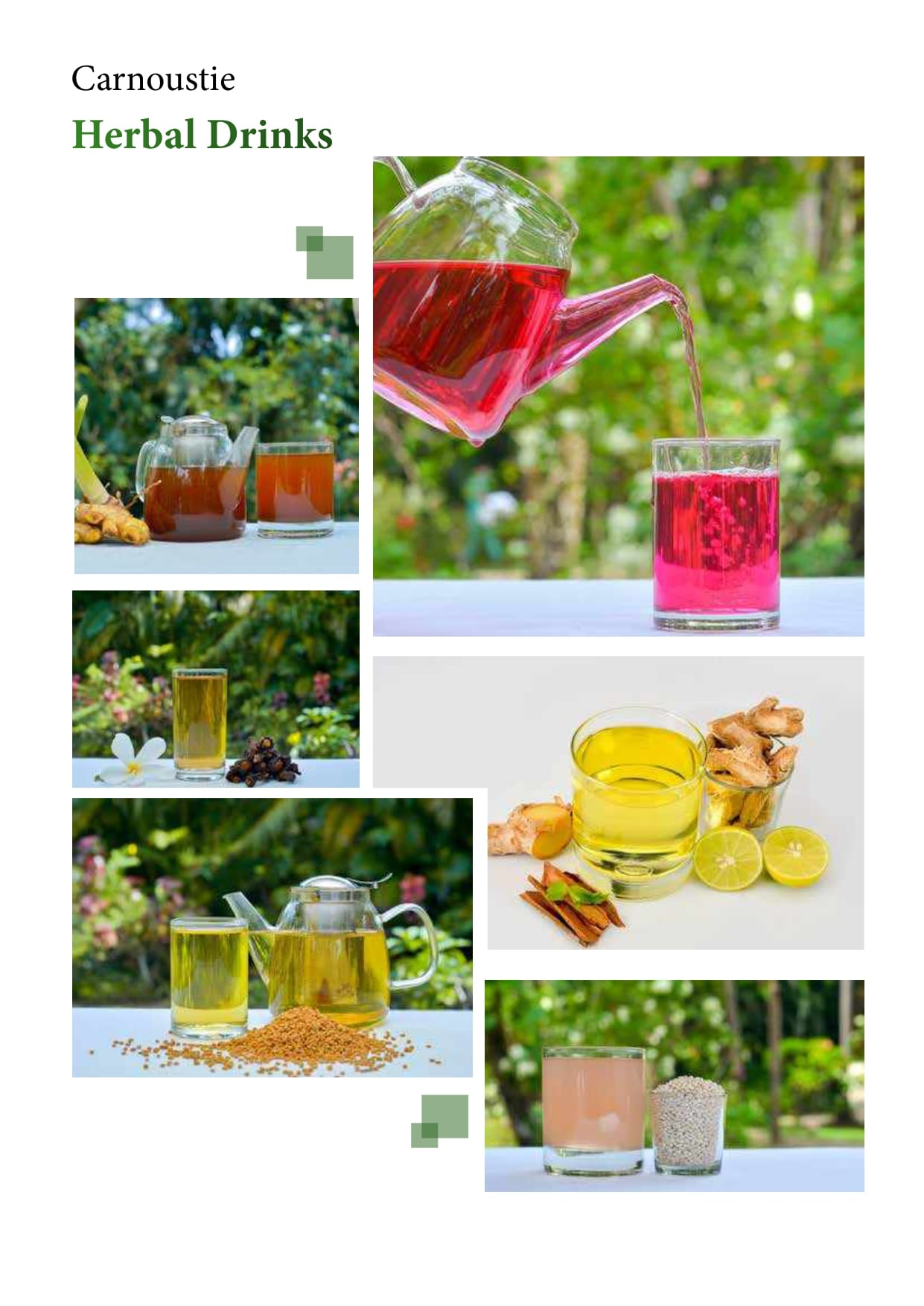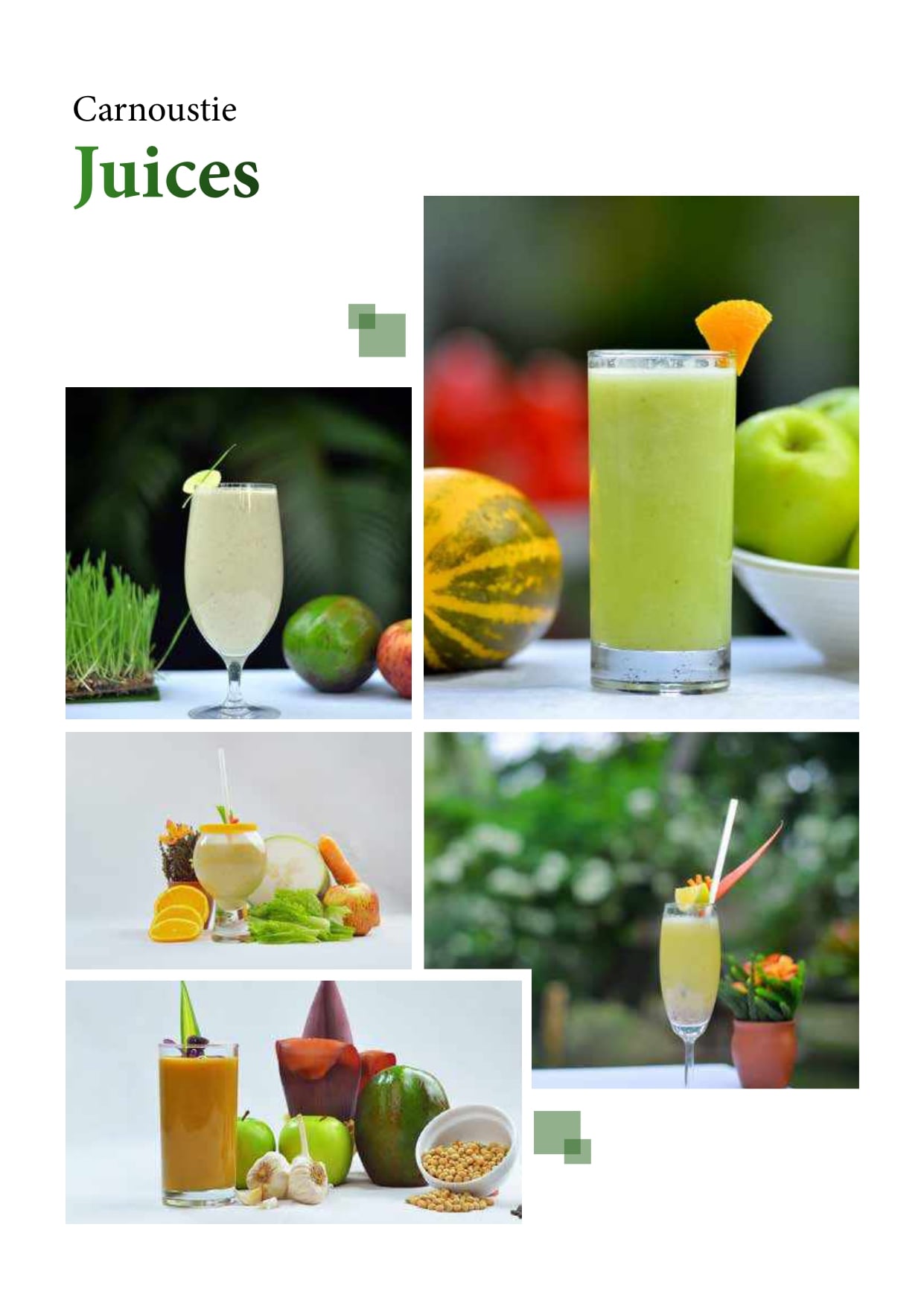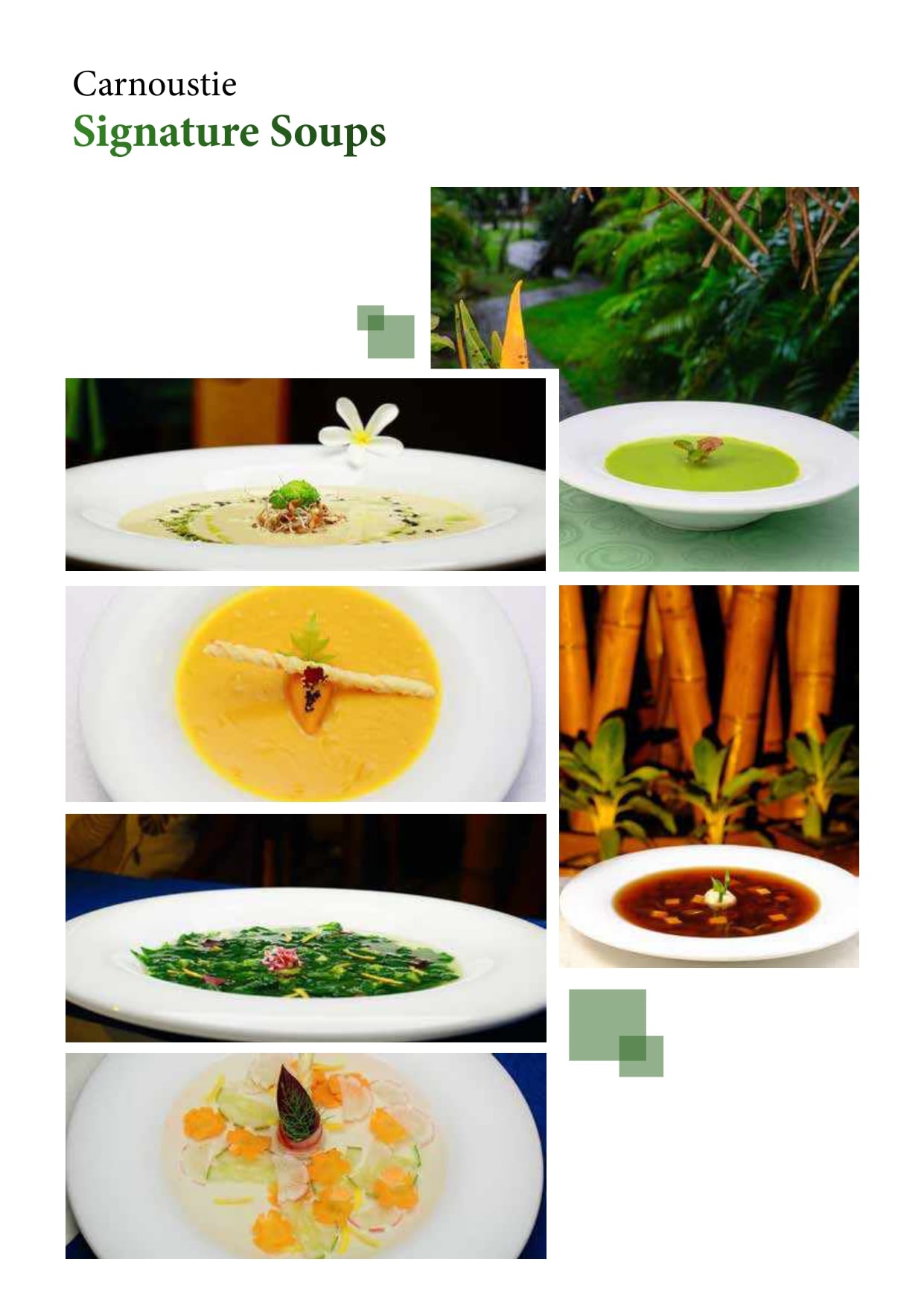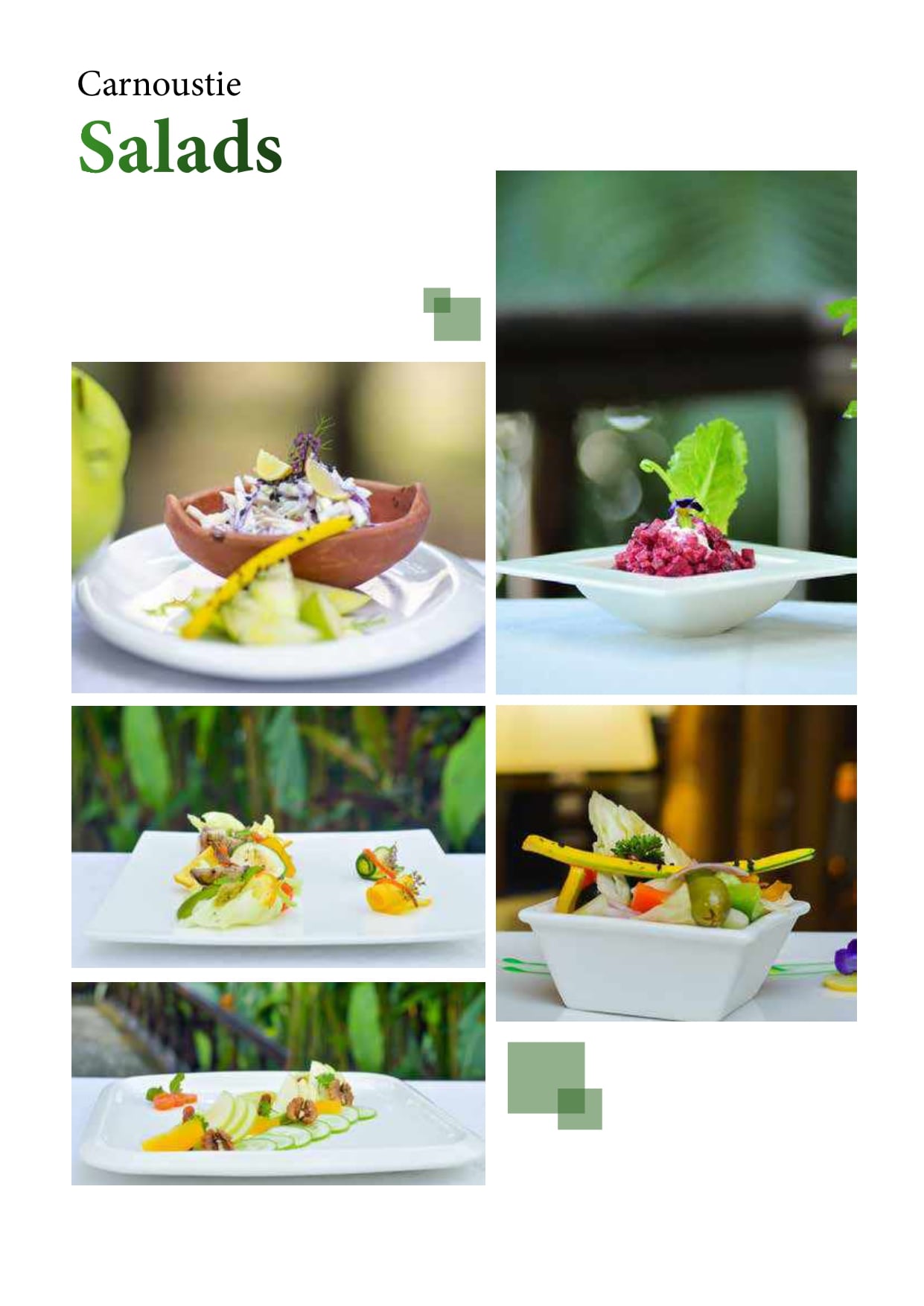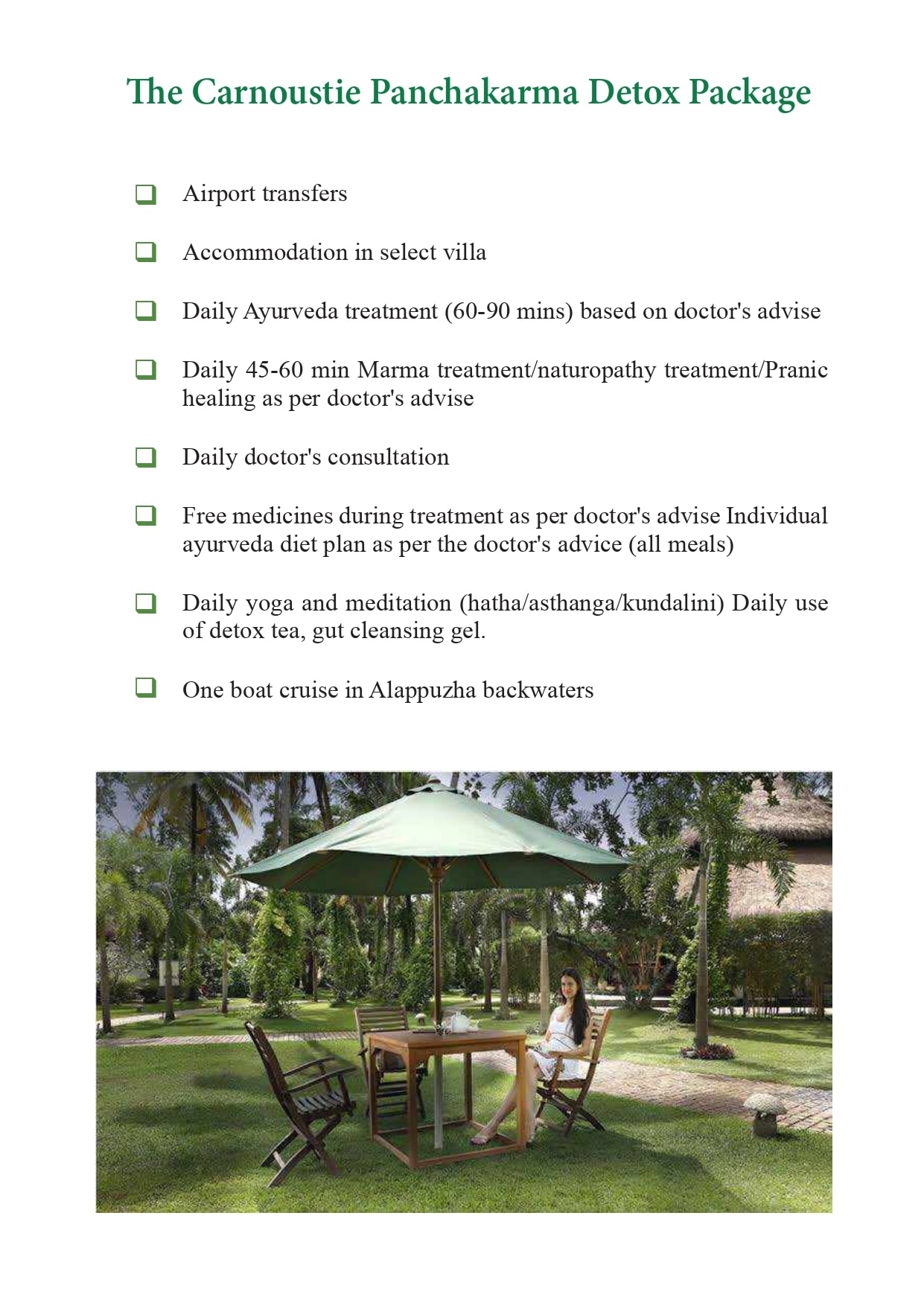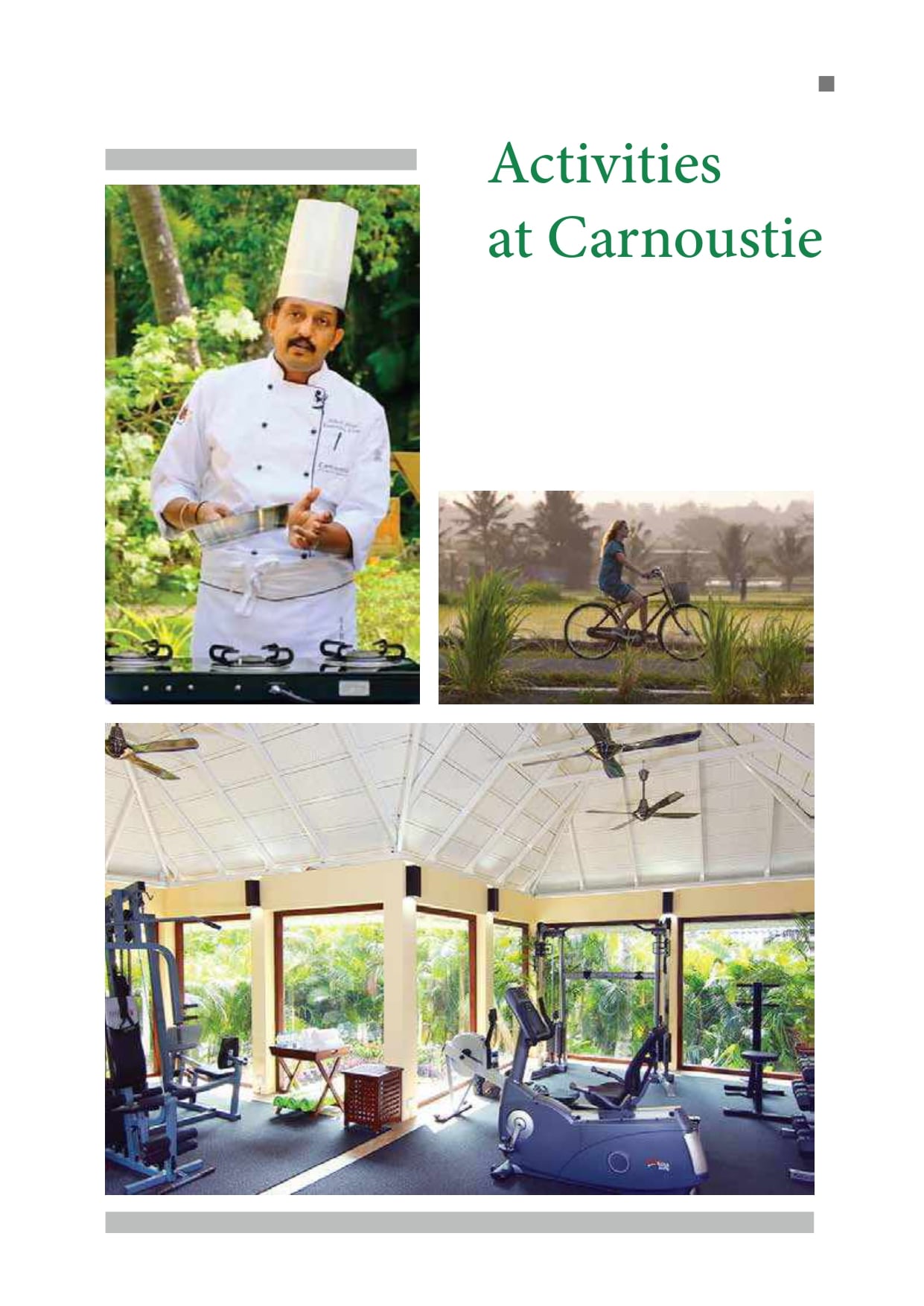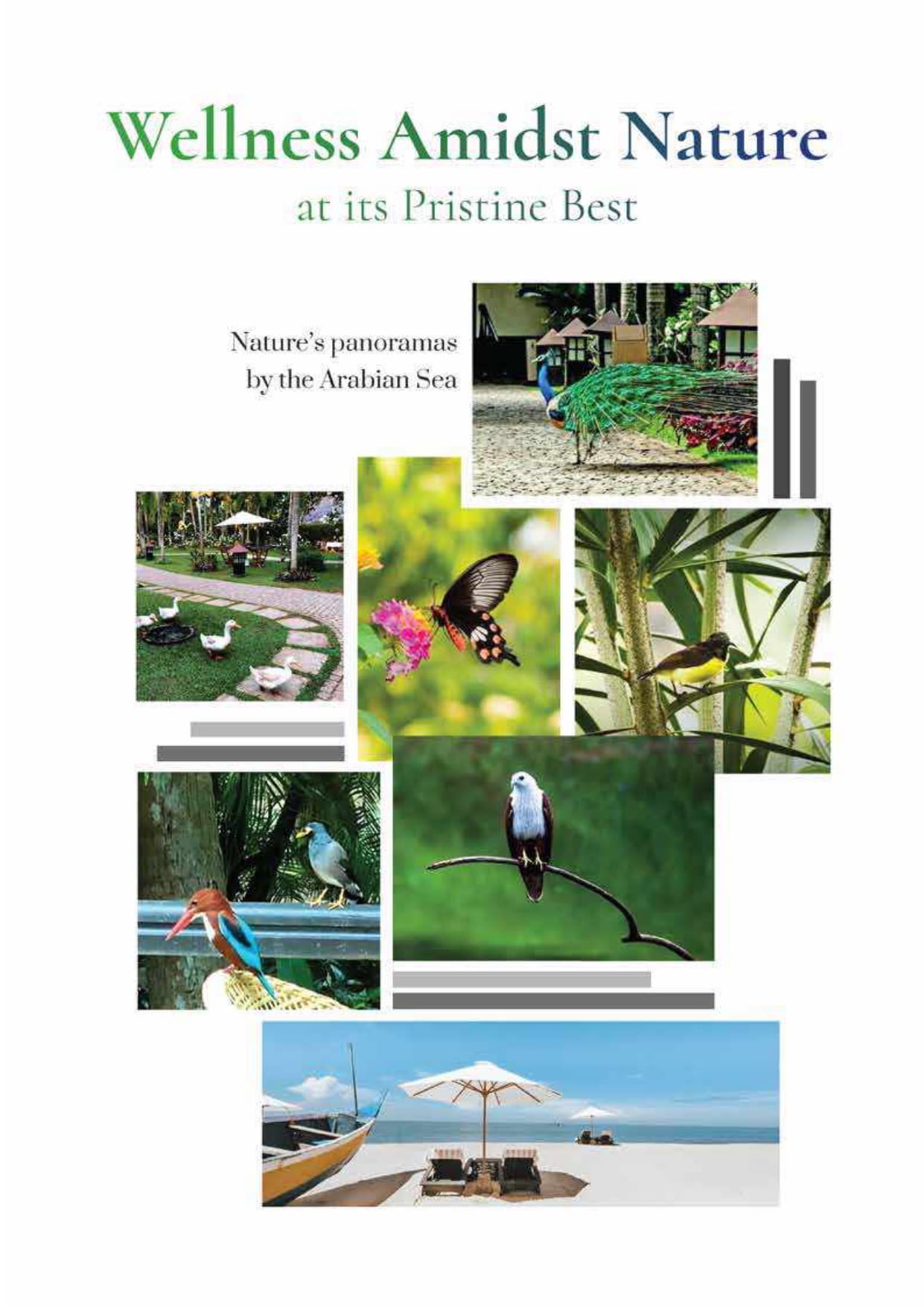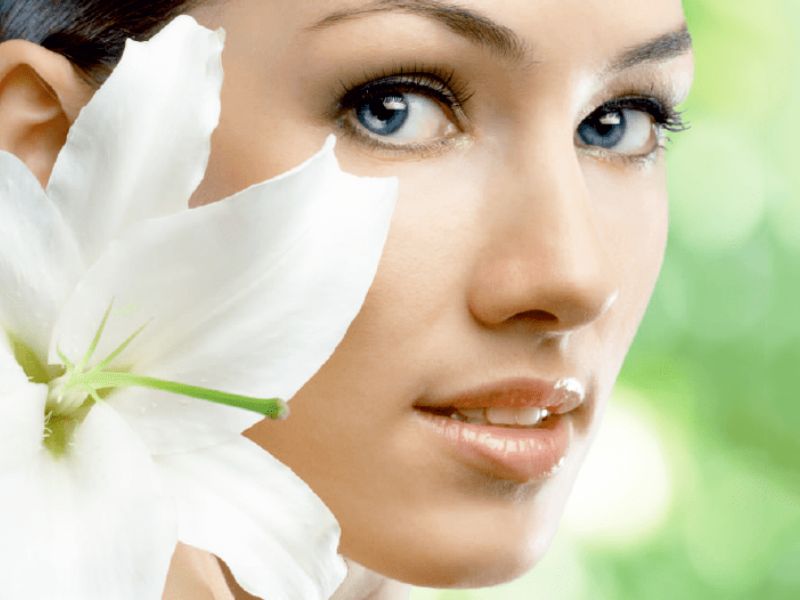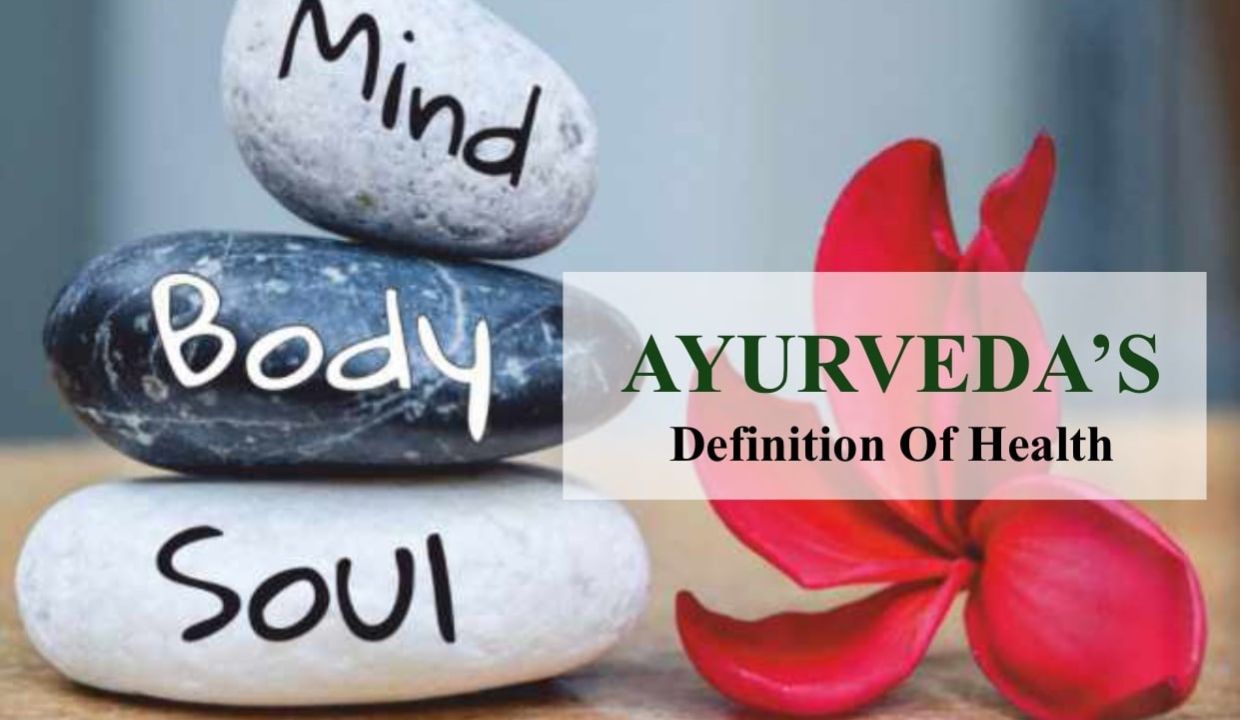
In Ayurveda, svastha, the Sanskrit word for perfect health is defined as a balance between body, mind, spirit and social well being". Ayurveda has a holistic approach to health and believes that restoring balance between our mental, physical and spiritual side is essential to be healthy For instance, there can be no physical health without mental or spiritual health and vice versa. This balance is not only internal but also external. External balance is the balance between the individual and the environment. Hence, it emphasizes on a balanced relationship with nature on one side and the people around us on the other.
- All things in the universe (both living and nonliving) are linked together. In fact, everything in the universe is actually made of the same five natural elements: space, air, fire, water and earth
- There is a deep connection between the self and the environment and harmony between the two is essential for living healthy life.
- Disharmony between our mental, physical and spiritual self leads to sickness
- Our lifestyle choices are important. Our choices in areas like diet, exercise, profession and relationships etc have the potential to create physical, emotional or spiritual imbalances making us more susceptible to disease.
Thus Ayurveda places responsibility of one health in oneself. It is not simply about taking herbal concoctions and treatments and encourages you to be an active participant in your own journey toward healing
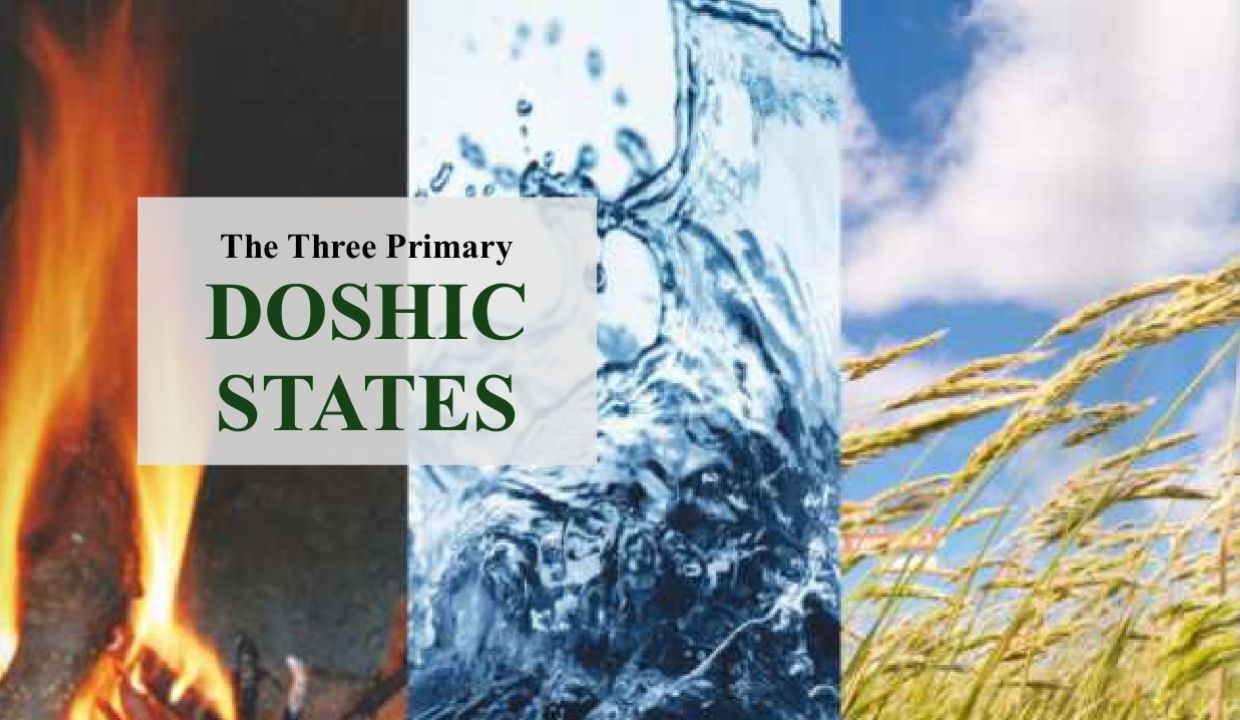
Have you ever wondered why each individual has different characteristic traits? Why some are gregarious, while others are reserved and quiet? Why some people love food and can eat just about everything, while others are poor eaters and dread food? Why are some people always happy and positive, while some are melancholic and pessimistic? While genetics has its own explanation, Ayurveda explains them through the understanding of the three doshas: Vata, Pitta and Kapha. According to the Ayurvedic concept of prakrin (constitution, each one of us is born with a unique combination of vata, pitta,and kapha dosha. This proportion at birth remains the personal reference point for optimal health and determines our physical and mental self. We remain healthy as long as our bodies can as long as our bodies can maintain the specific ratio of vata, pitta, and kapha that we were born with. However, any imbalance in this datural proportion, leads to physical and mental disease. No particular dosha is superior to the other. Each one has specific and we found physical and emotional influences never individual. This is the online pen behind the fact that no two individuals are identical. However, generally only one dosha dominates an individual, but is some cases there might be an interplay of two together in varying proportions. Thus, Ayurveda recommends that we seek expert help to identify the correct dosha as per your body type and make subtle lifestyle and dietary changes to ensure that we can be healthy always
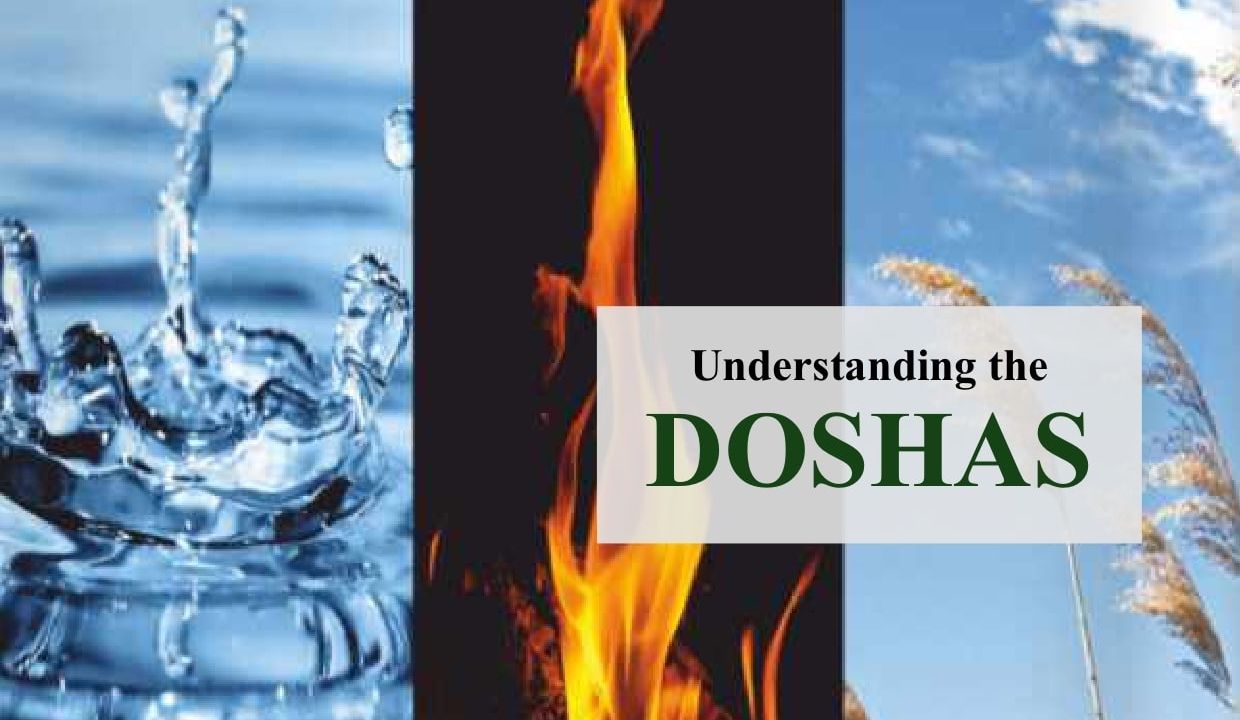
The Doshas are biological energies that govern all physical and mental processes and provide every living being with an individual blueprint for health and achievement They are found in the following three states:
Balanced: in this state all the three doshas are balanced in their natural proportions.
Aggravated: in this state, one particular dosha is in excess and dominates.
Depleted: in this state, one particular dosha is present in less than normal proportion.
Of the three, the aggravated state is the worst and leads to imbalance and disease An aggravated dasha state can be the result of an imbalanced diet or a stressful lifestyle Ayurveda offers an individualized treatment for each type or body condition which is were different from the imbalanced doshas can be cured by making alterations in diet and lifestyle. It is important to note that each dosha type has its own specific dietary and lifestyle recommendations to keep it balanced and for this apparent reason, Ayurveda does not believe in an universal diet for all. Every individual should consume a diet compatible her predominant biological humor doshas, to keep him in a state of perfect equilibrium a different seasons. This is both a preventive and curve approach optimal health
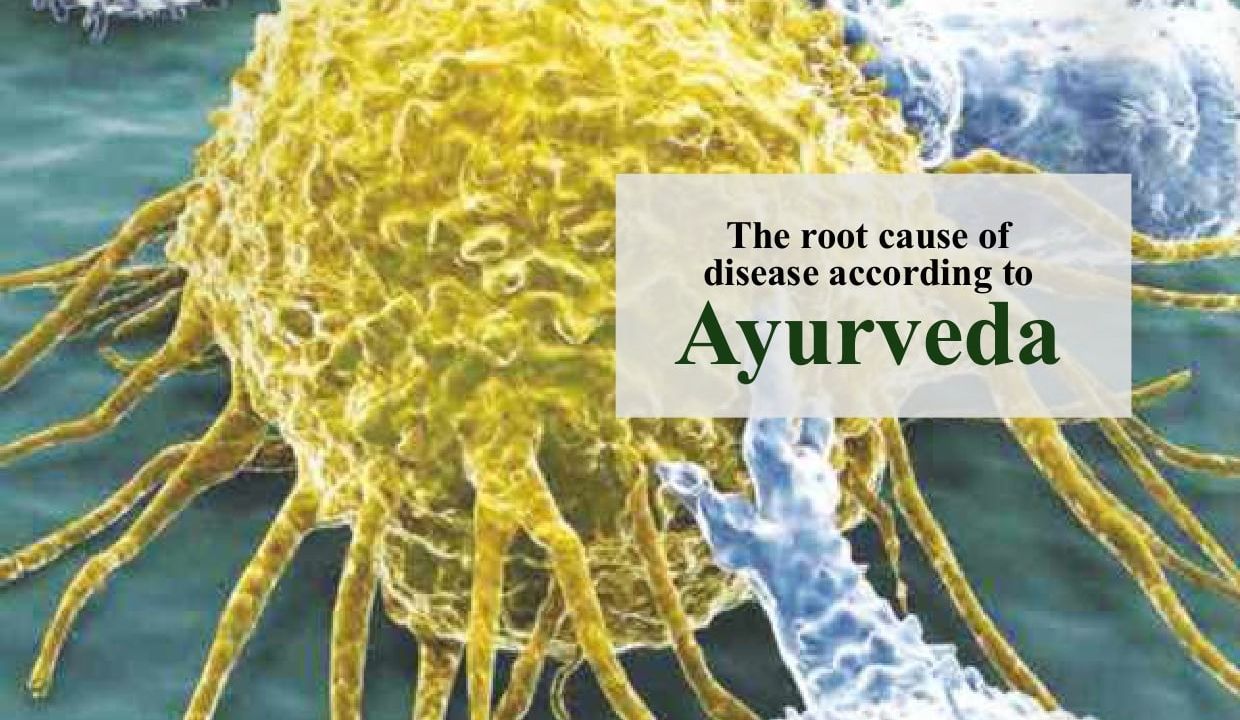
According to Ayurveda, the root cause of disease is the imbalance of the three Doshas. This imbalance is primarily caused by bad habits, an erratic and fast paced life style, unhealthy eating habits, poor hygiene, stress and anxiety, overwork, suppressed emotions, personal, social or family problems, insufficient sleep, trauma and negativity. The weather conditions are also known to cause this imbalance or aggravate it. Living in a windy place can aggravate vata, hot weather can magnify pitta and humidity and moist weather can worsen kapha This imbalance weakens the immune structure and eventually lets diseases and ailments manifest easily. Sushruia, the ancient sage, revered as the father of Surgery in Ayurveda defined good health as a state of physiological, psychological and spiritual equilibrium. In Ayurveda none of these states are studied in isolation and each one impacts the other. Hence in Ayurveda, the Ama or the toxins are not only related to food but also to the mental thoughts that we consume and process. The interdependence between the three states can also be understood by understanding our digestive system. It is a known fact that a robust digestive system leads to a strong and capable mind. In fact the food we eat has a direct bearing on our mood. When the digestive system works well, we feel light and happy both physically and emotionally. On the other hand, when our digestive system is impaired, we feed more heavy/lethargic and irritable. Please note that Ayurveda does not imply that a good digestive system automatically ends all emotional turbulence. It however, boosts a person's physical and emotional strength and helps him/her to cope better with a situation and the ensuing stress
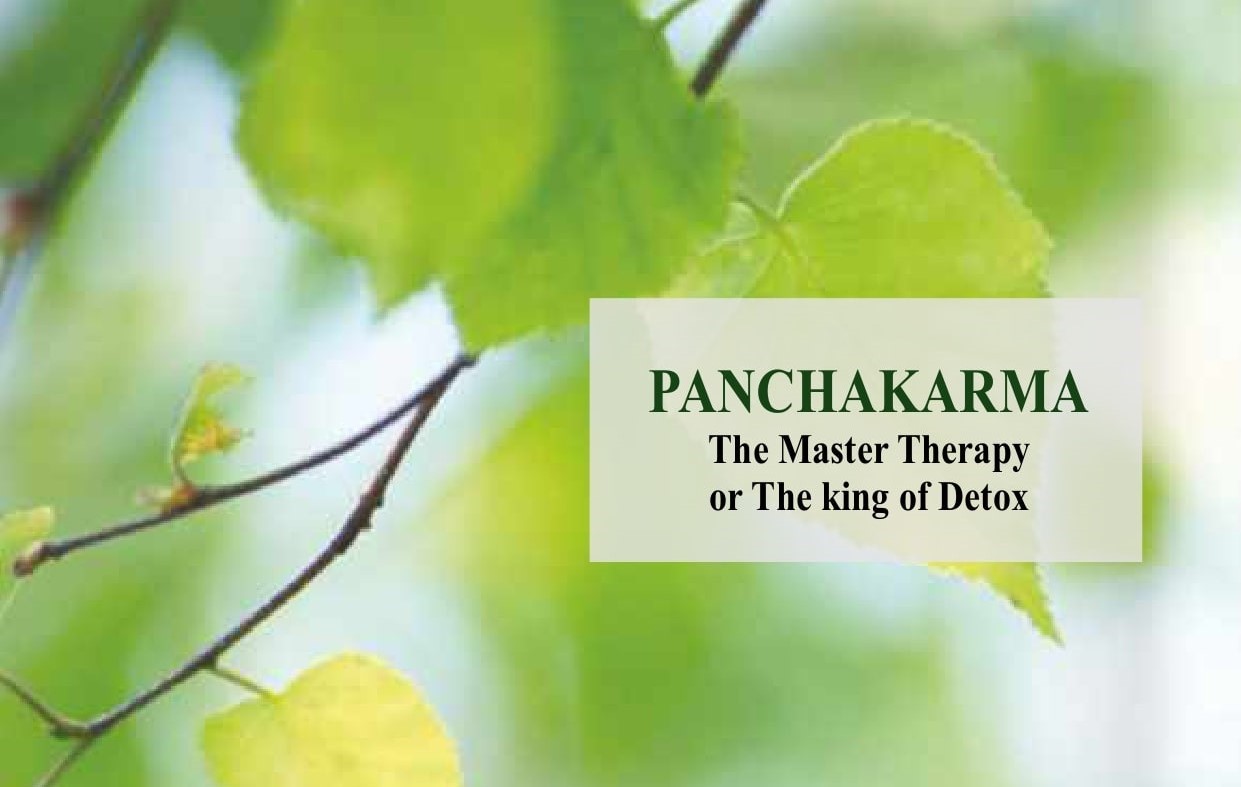
Panchakarma is a Sanskrit word which means 'five actions. The Panchakarma is the most significant treatment for purification and detoxification in Ayurveda. It is a five- step, total mind-body rejuvenation experience that comprises of herbal oil massages, steam baths, cleansing enemis, a healing satvic diet and other purifying practices. Eliminate deep rooted toxins from the system, rebalances the Doshas, heals numerous ailments and reinstates a sense of clarity and inner peace. Panchakarma in Ayurveda is an extremely intense, and at the same time, a very gentle internal cleansing. However, since each individual's constitution and body type are different, there cannot be a set procedure for all. It is a highly individualized treatment and needs to be undertaken under close supervision. The treatment varies from individual to individual and depends on factors like the individual's Ayurvedic constitutional type, doshic imbalances, age, digestive strength immune status and many other factors. These treatments/procedures must be administered by specially trained therapists in an exact sequence for a specified period of time. Although Panchakarma is for the most part delightful and comfortable therapy, there can be periods of discomfort asociated with the intense release of toxins, which does occur. It is therefore essential for a knowledgeable expert to supervise the treatment
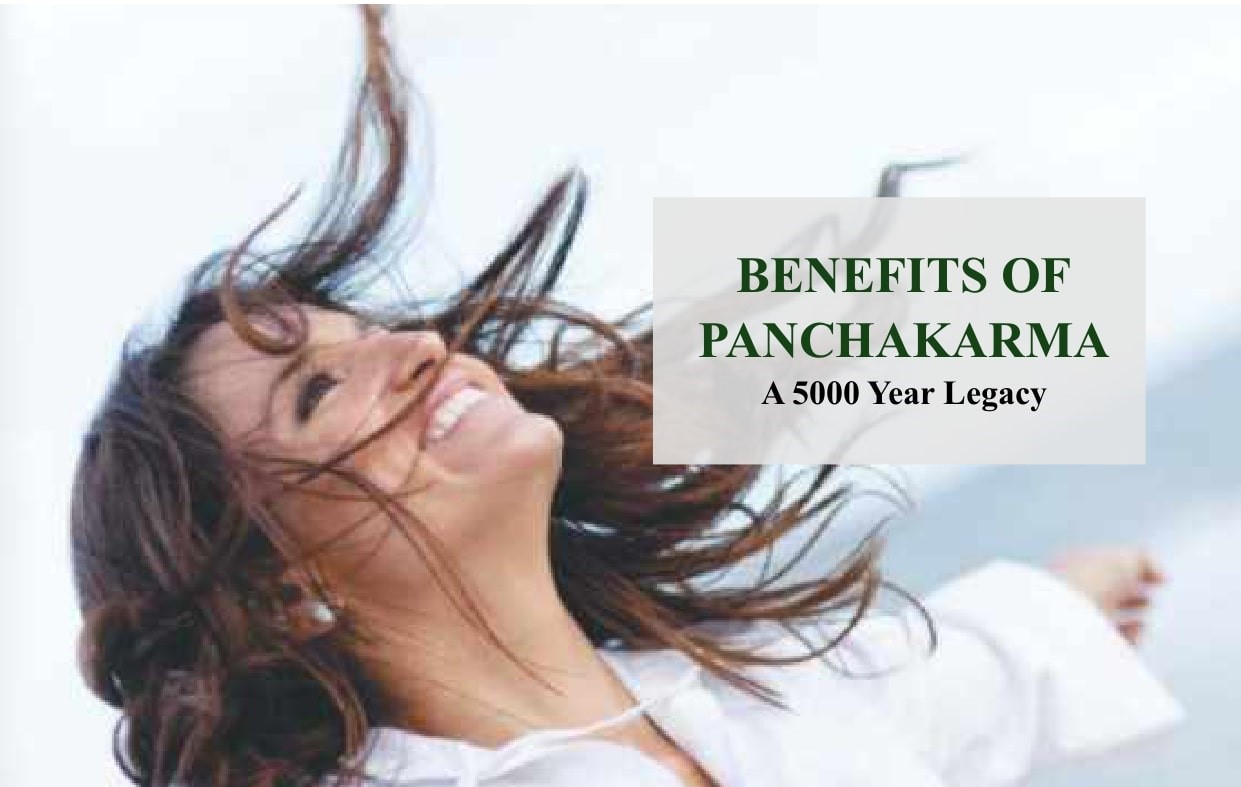
Panchakarma is the oldest detoxification therapy known to man. It has the following benefits:
- Panchakarma has a strong preventive effect and boosts the body's immunity and energy levels.
- Ayurveda considers the imbalance of the doshas to be the root cause of all disease. The treatment aims to address this imbalance.
- As a deeply profound detoxification and cleansing therapy, Panchakarma is also effective for chronically il persons.
- It enhances strength and vitality
- It promotes anti-agingand longevity.
- It improves digestion and metabolism.
- It stimulates the nerve cells and rejuvenates the body.
- It improves the sensory faculties to pens up skin pores and improves skin texture, colour and luster.Itclears all the channels of the body.
- It calms the mind and improves mental capacities.
- It reduces dependence on alcohol, tobacco and drugs
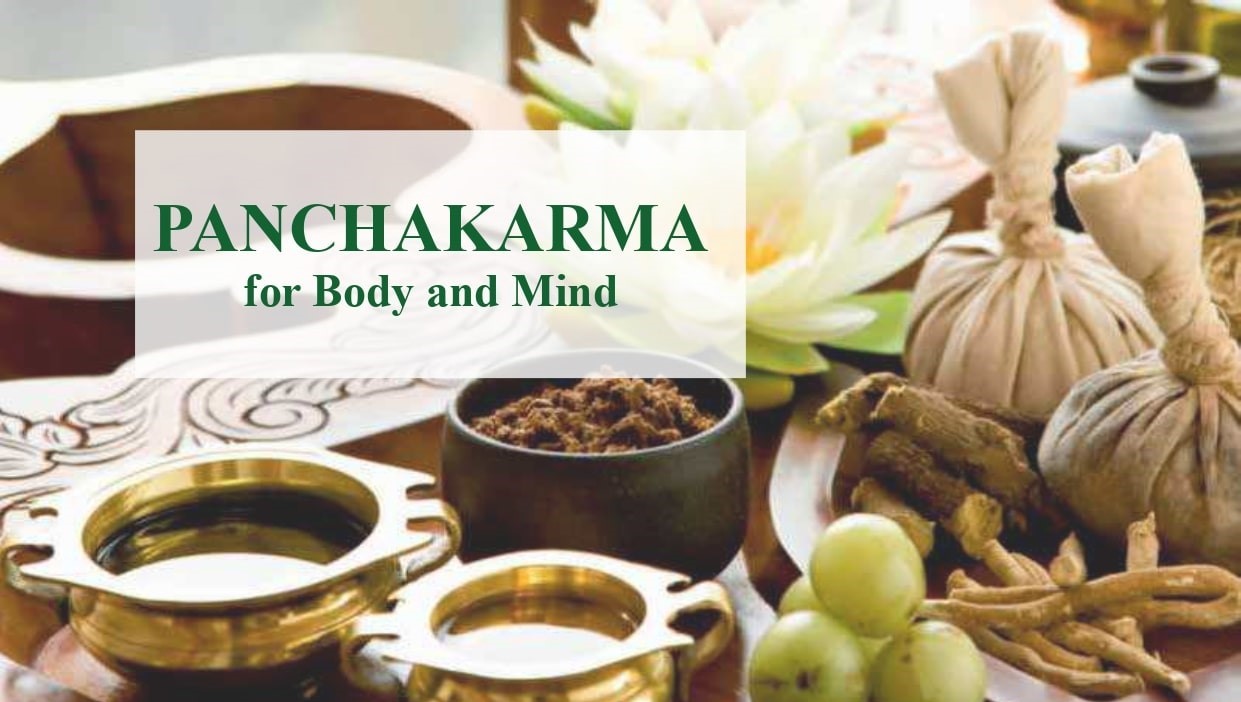
"One whose Dosas, Agni and function of Dhatu and Malas are in the state of equilibrium and who has a cheerful mind, intellect and sense organs is termed as "Svastha" (Healthy)."
This emphasis on mind-body connection is the underlying principle of Pan- chakarma. It is a complete and profound mind-body healing experience. It aims to detoxify the body, improve digestion and enhance the immune system on one hand and revives inner harmony, promotes wellness, gives satisfaction and detoxifies the mind on the other. The therapists focus on getting a perfect understanding of the body constitution-prakriti' and the cause of its imbal- ance. These causes could be lifestyle or diet related or may be the side effect of excessive stress and a negative mental state. Panchakarma adopts a more holistic approach to the cleansing process as compared to modern medicine because it believes that no amount of cleaning or healing is possible till the mind is at ease. The brain controls the functioning of all our vital systems and when the brain is restless, it impacts their functioning. The maximum impact is felt by the digestive system that breaks down on account of stress. That is why panchakarma incorporates treatments and therapeutic massages that not only cleanse the systems but also calm the mind and reduces stress levels. The treatments aim at releasing both, physical and emotional stress stockpiled in the body. During and after the full panchakarma treatment, the body feels lighter and rejuvenated and the mind and spirit feel elated and calm.
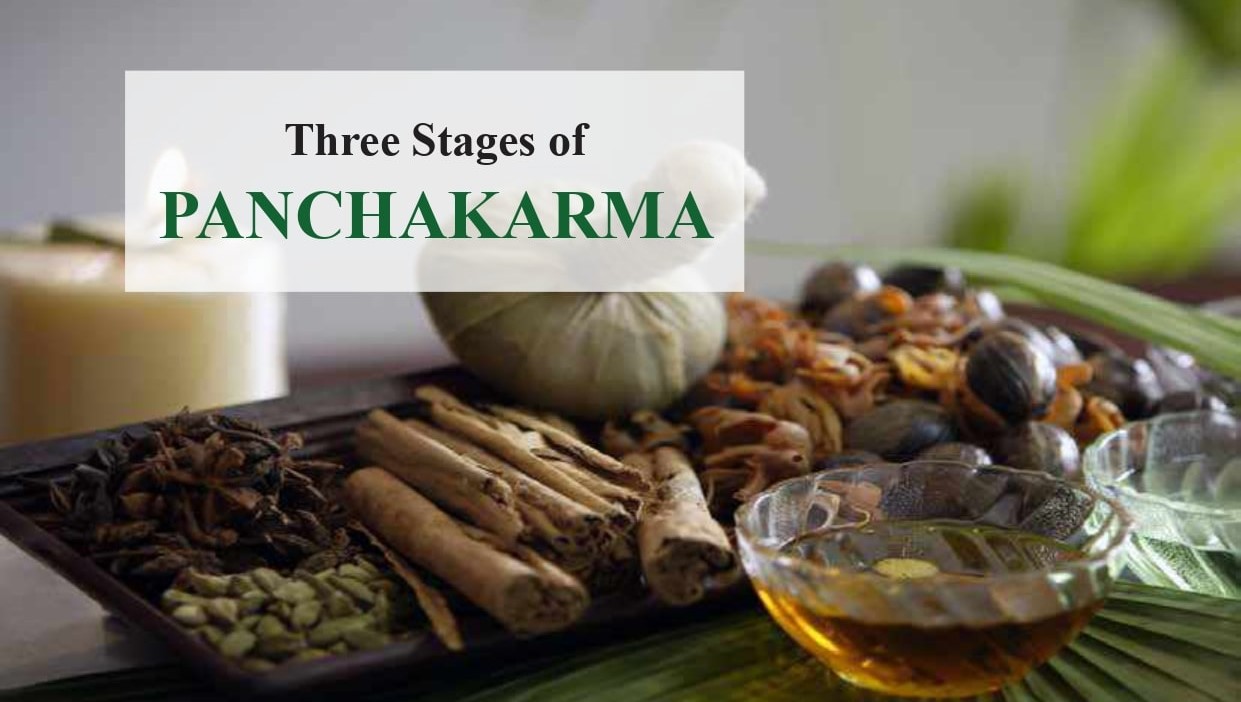
Like all medical procedures, Panchakarma therapy begins with an initial con- sultation with a qualified Ayurvedic Physician who identifies the individual's prakriti (constitutional type), the nature of the health problem (if any), and the appropriate degree of intensity of the prescribed therapies. It is a highly individ- ualized treatment and needs to be undertaken under close supervision. The treat- ment varies from individual to individual and depends on factors like the indi- vidual's Ayurvedic constitutional type, doshic imbalances, age, digestive strength, immune status and many other factors. These treatments/procedures must be administered by specially trained therapists in an exact sequence for a specified period of time. Although Panchakarma is for the most part a delightful and relaxed therapy, there can be periods of discomfort associated with the intense release of toxins, which does occur. It is therefore essential for an erudite expert to supervise each step closely to recognize the signs and symptoms and modulate the treatment accordingly.
Panchakarma is performed in three stages:
- Purva Karma (pre-treatment)
- Pradhana Karma (main treatment)
- Paschata Karma (post treatment)
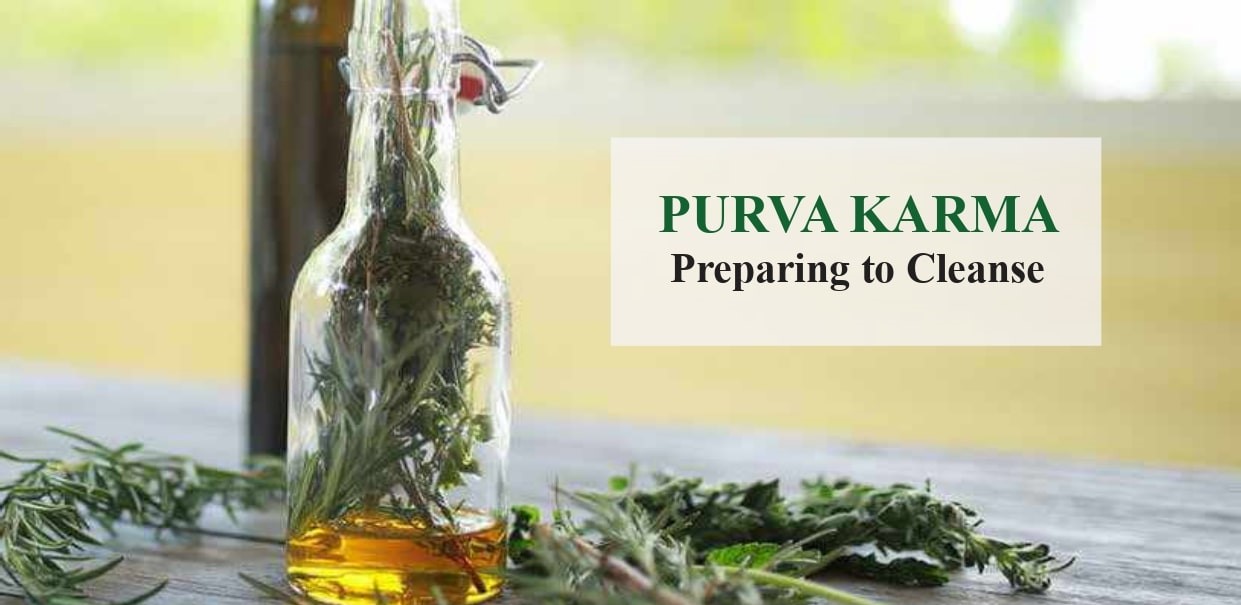
This is the preparatory stage. The objective of this stage is to draw, slacken, thaw and mobilize the stubborn toxins/ Ama stuck in various parts of the body and to direct them to the body's elimination channels. This process draws toxins outward from deep tissues and moves them into the gastrointestinal tract and the skin from where they can be eliminated easily. The toxins can be both phys- ical and mental. It has two procedures namely Snehana and Swedana. What to expect
- There is no fixed format for this treatment and the treatment varies from individual to individual and depends on the individual's prakriti/constitu tional type and nature of disease.
- People with suppressed toxicity or long-term disease may experience some aggravation of symptoms as toxins are brought back into circulation to pre pare them for elimination.
- Individuals who have emotional trauma associated with the development of disease might experience emotional releases.
- Some people may experience low energy/ exhaustion and may want to sleep longer hours.
- Those in physical pain may experience mild to moderate increase.
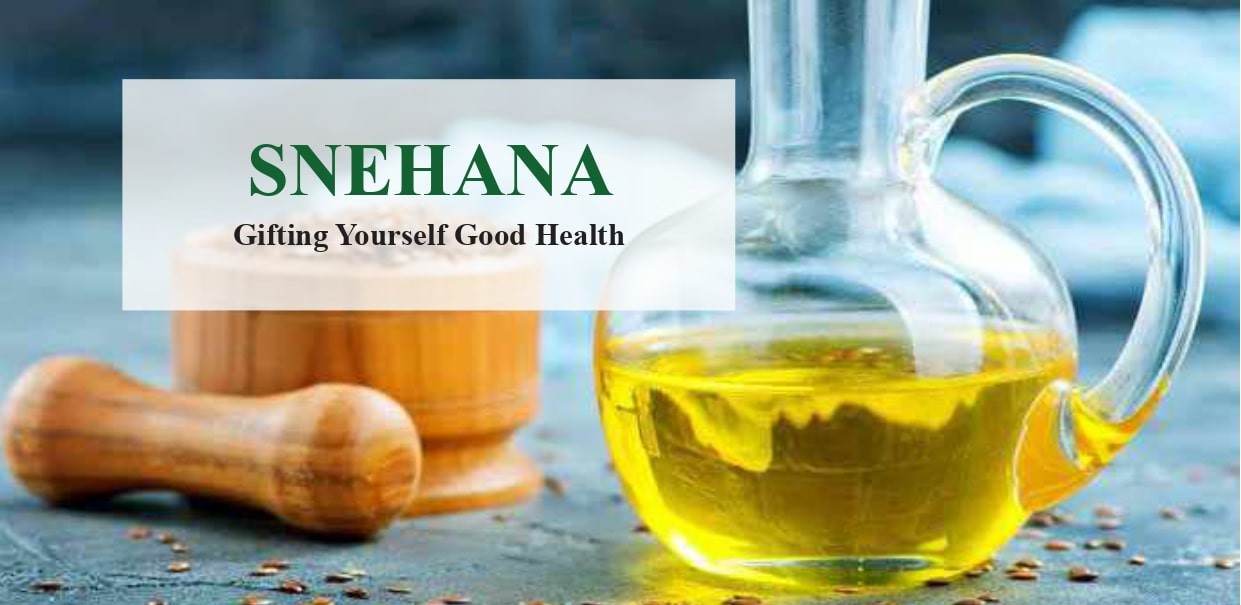
The word 'Snehana' is derived from the Sanskrit word' sacha' which refers to something that is soft, oily and lubricating like ghee, oil etc. It is important to note that the Sanskrit word snehana means much more than just oleation. It also translates into words like love and opening up. Meraphorically, it signifies the love for our own body for which we soften and surrender to the cleansing pro- cess. We are able to go with the flow and release our mental, emotional and phys- ical toxins built over a period of time. This perspective makes us view 'snehana' as a gift to ourselves, the end goal of which is to find love, peace and harmony both internal, as well as external. Snehana (oleation) is the first step of Purvakar- ma. It consists of saturating the body with herbal or medicated oils both external- ly and by consuming them as well.
Thus Snehana is of two types:
- Internal Snehana or Abhyantra: this involves consumption of subscribed amounts of ghee or medicated oils under supervision. It helps loosen Ama and moves it from the deeper tissues to the gastro-intestinal tract, from where they are eliminated.
- External Snehana or Baahya: this includes application and massage of medi cated oils to relax the channels and nourish and revitalise the body. The treat ment helps dislodge the deep rooted toxins and doshas and brings them to the digestive tract for further removal.
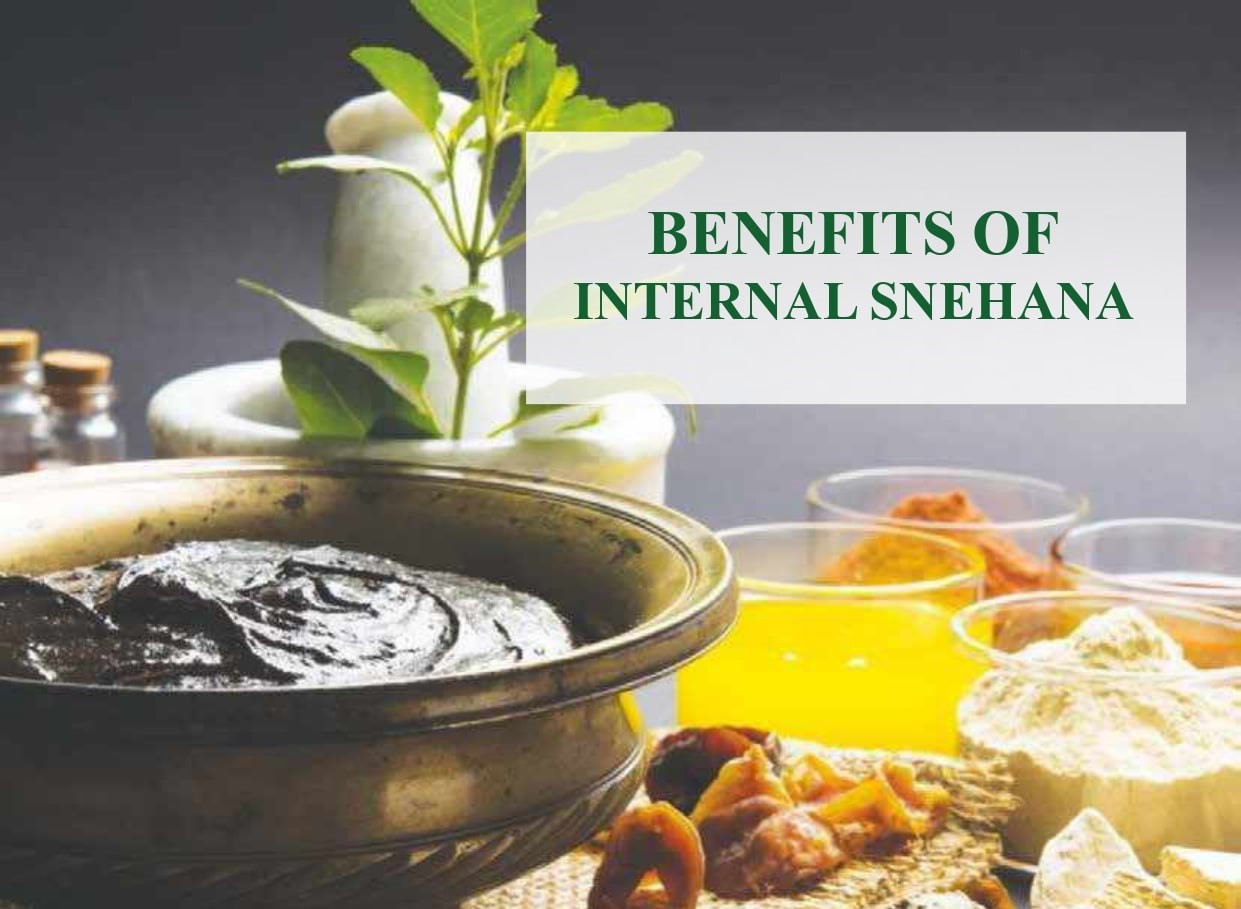
- It improves the elasticity of the body.
- It increases the suppleness of the all the systems.
- It alleviates the excessive vata/wind element.
- It reduces the pains and aches of the muscles, joints and the skeletal system.
- It dislodges the toxins of the body and helps in bringing them to the GI tract.
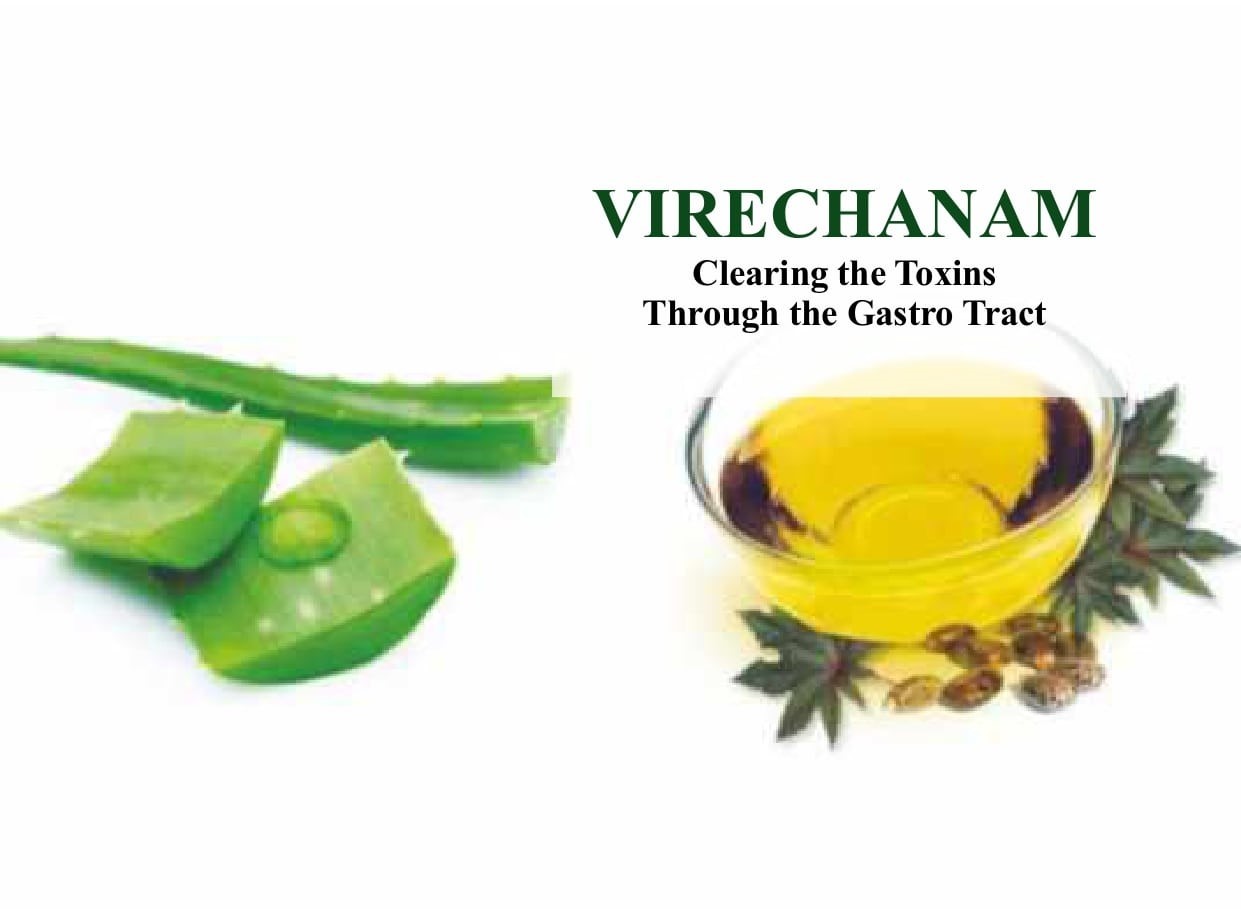
Virechanam cleanses the Pitta and purifies the blood by clearing the toxins from the body. The treatment concentrates on the toxins that are accumulated in the liver and gall bladder and the gastrointestinal tract. In Virechanam, the vitiated Doshas are eliminated through the rectum. The treatment is given in the morning after the person is given the "Snehapanam" and "Swedanam" for internal lubrication. The person is then given a certain prescribed dose of herbal medicines on an empty stomach. Within 1-2 hours, the bowels are emptied, expelling all accumulated toxins with it. Though all three excessive doshas are eliminated from the digestive tract, Virechanam is primarily effective in removing excessive Pitta dosha.
Duration: Varies from patient to patient
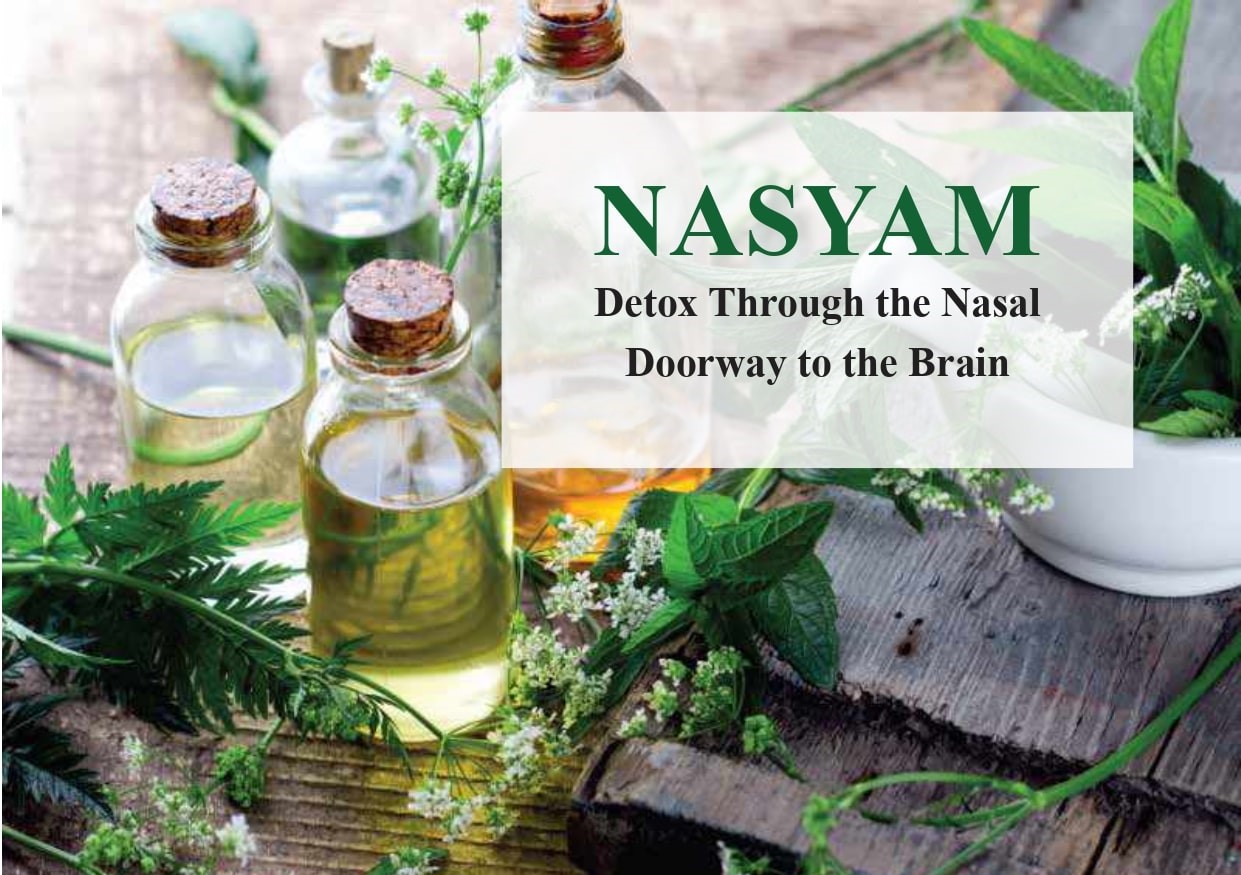
Nasyam is a very important treatment for any discomfort in the head region. Nostrils are considered the doorway to the brain. In this therapeutic treatment, medicated oil, medicated powder or herbal juices are administered through the nose for a prescribed duration. This removes the excess humor accumulated in the sinus cavity and throat. It is very effective for treating migraines, hormonal imbalances, paralysis, mental disorders, premature graying of hair, loss of smell and taste and it can even add clarity to the voice. It cleanses the different cavi- ties, increases oxygenation and improves brain functioning.
There are different kinds of Nasyams based on the type of medicines and oils used. Nasyam not only helps in removing toxins from the head, neck, brain, eyes, car, nose and throat region, it also gives immunity and strengthens their functioning. It nourishes the nerve endings in the nose that terminate in the limbic area of the brain which is associated with our emotions. Soothing these nerves helps in treating emotional problems and bringing mental clarity. The therapy is very useful in treating chronic migraine, insomnia, premature greying of hair, cervical spondylosis and paralysis.
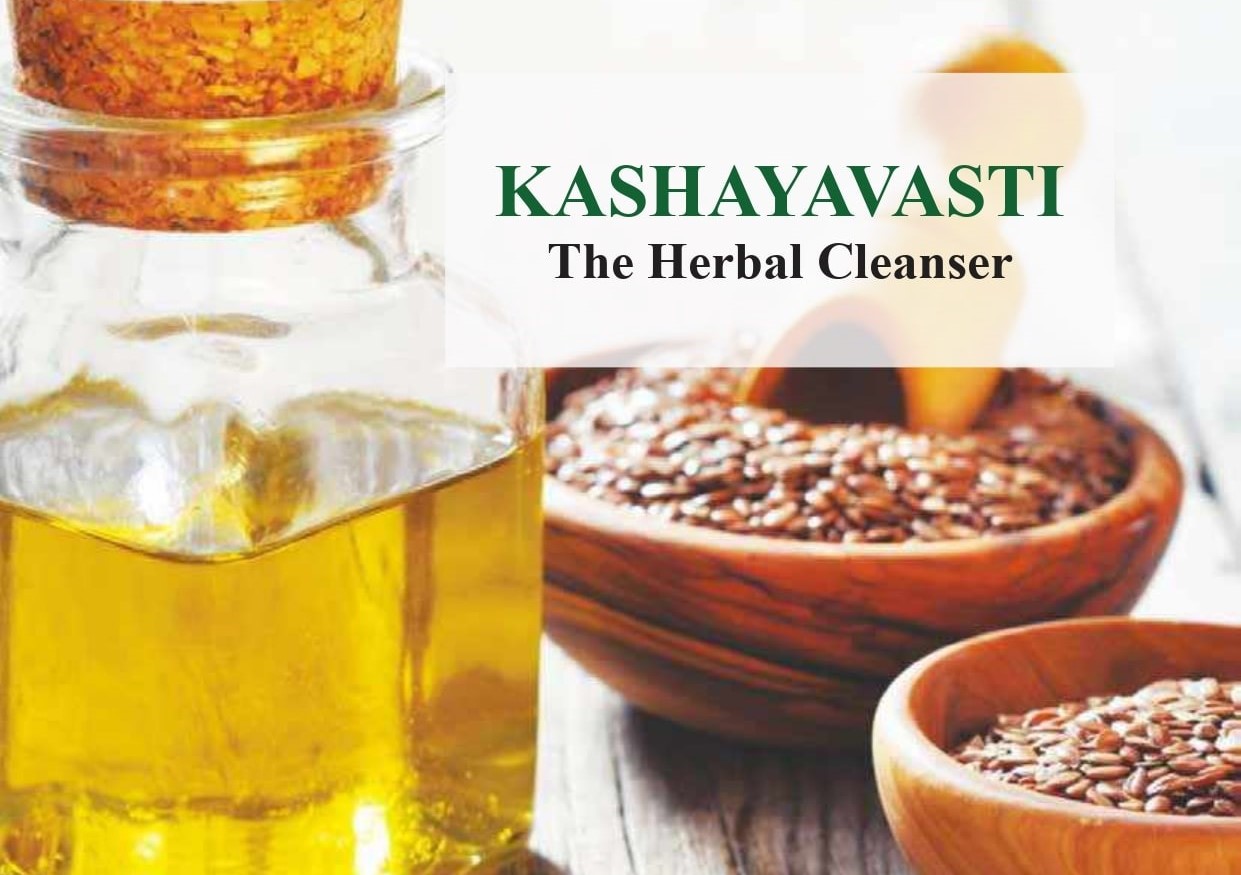
Normally, Kashaya Vasti is done after Sneha Vasti. It is a purging and a thera- peutic enema using a herbal decoction made of honey, rock salt, medicated oil and herbs. The treatment is administered as per the prescribed dosage and under supervision. The body dispels all toxins with fecal matter. This treatment is par- ticularly helpful in curing gastric, spinal and neurological disorders, acidity, flatulence, acute and chronic aches, headaches, migraines and other degenera- tive disorders.
Duration: Variable (1-2 hours generally)
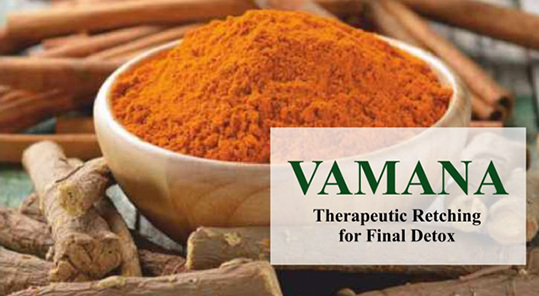
Through Snehana and Swedana procedures, the toxins are mobilized and brought from the body tissues to the gastrointestinal tract. The patient is then made to undergo induced vomiting/ vamana to finally eliminate them. This treatment is given after careful examination to ensure that the individual has the strength to undergo the regimen as it can weaken the individual temporarily. The therapists induce vomiting by making the patient ingest a combination of herbs that are carefully chosen based on the individual's dosha and prakriti type. This vomiting under strict supervision is very effective for cleansing the stomach and removing Ama (toxins) and mucus from body channels and chest. Vamana is very effective in treating asthma, lung diseases, bronchitis, mucus congestion, skin disorders, diabetes, prolonged fever, chronic indigestion, anaemia, gastritis, diarrhea, tumours and many other ailments
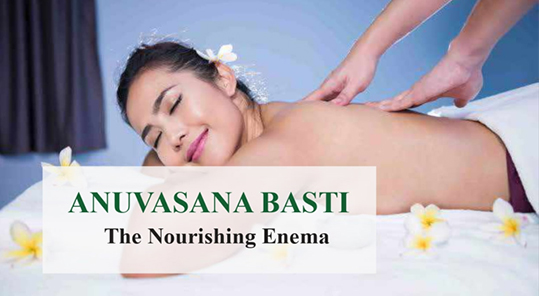
Anuvasana in Sanskrit means to 'stay in'. In this type of basti/ enema, the med- icated fats are administered in small doses and retained in the body for 3-4 hours. The principal objective of this nourishing vasti is to improve the intesti- nal flora after the cleansing enemas described in the previous pages are admin- istered. The medicated fats nourish and strengthen the tissues and the digestive system. They improve intestinal health and strengthen the mucus membranes and lining of the intestines. This is specifically prescribed for vata disorders. is a very effective 'add-on' for therapies used to treat digestive, liver and neuro- logical disorders such as facial paralysis, sciatica, hemiplegia, paraplegia, poliomyelitis and other such conditions.
Duration: 3-4 hours
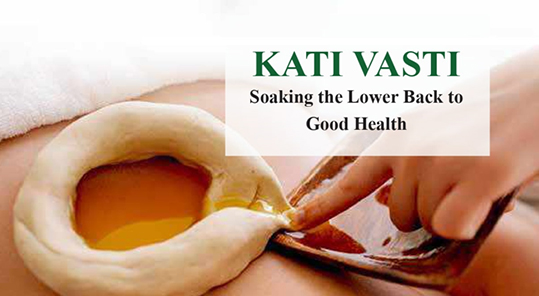
The term Kati Vasti comes from the Sanskrit words-'kati' meaning lower back or waist, and 'vasti' which means to hold. Kati Vasti involves the retention of warm thick medicated oil over the lower back or other parts of the spine for a specific period. The medicated oils are absorbed by the skin and nourish the underlying tissue, nerves and muscles. The therapy increases blood circulation, eases inflammation and provides nourishment to the spinal cord. It is very useful for treating lower back ailments like lumbar spondylosis, intervertebral disc prolapses, lumbago (lower backache) and sciatica. It also helps in provid- ing pain relief associated with fracture, dislocation, spinal tuberculosis and tumours.
Duration: 60 minutes
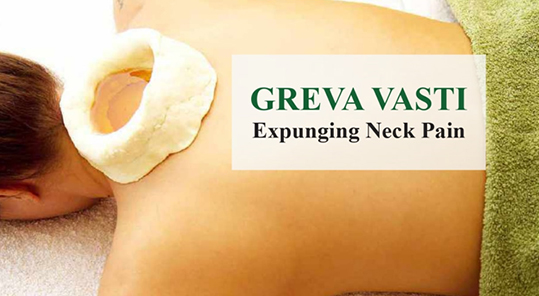
The term Greva vasti comes from the Sanskrit word-'greva' meaning neck and 'vasti' which means to hold. The neck is almost 90% muscle on the rear side. The spinal vertebrae in this area are very delicate and need constant nourish- ment. Excessive dryness of the intervertebral fluids and strain cause degenera- tion of these discs and cause stiffness and pain. The treatment involves the retention of warm medicated oil over the nape for a stipulated time. The medi- cated oils are carefully chosen based on the person's basic dosha type and prakriti /constitution type. The medicated oils are absorbed by the skin and nourish the underlying tissue, nerves and muscles. The therapy increases blood circulation, eases inflammation and provides nourishment to the spinal cord. It lubricates the cervical joints and eases movement. The treatment is very effec- tive in easing neck pain and stiffness and is recommended in the treatment of cervical spondylosis, spondylitis and migraine, weakness of the limbs, upper back pain and numbness Duration: 60 minutes
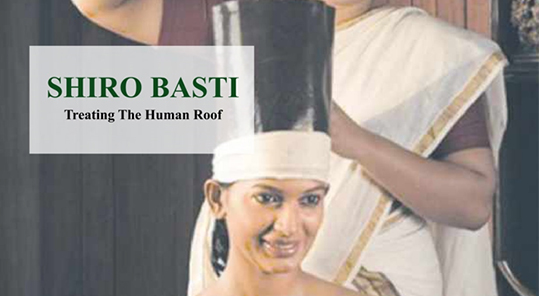
The name shiro basti is derived from two words- 'shiro' meaning head and "basti' meaning pool of herbal or medicated oils. Shiro basti is based on the Ayurvedic analogy between the head and the roof of a house. Just as the roof protects the house and is kept soaked with stagnant water to make it strong after construction, the head is also soaked in oil to nourish and strengthen the central nervous system. In this treatment a pool of herbal oils is kept over the head in a specially constructed chamber or compartment to nourish and strengthen the central nervous system. It cures all disorders related to the sense organs, metabolism and the doshas. It is prescribed for migraines, headaches, anxiety, stress, insomnia and the prevention of psychosomatic disorders. It treats morbid vata and kapha, improves vision and stops pre mature greying and balding.
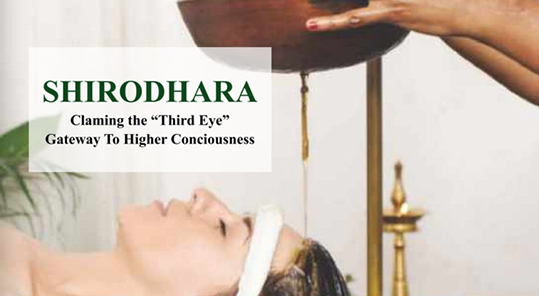
The term 'Shirodhara' is derived from the two Sanskrit words: 'shiro', meaning head, and 'dhara', meaning to flow. It involves the warm and steady flow of medicated oils on the forehead, more specifically on the "third eye. The Vedas describe the third eye chakra or 'Ajna' as the gateway to higher consciousness and enlightenment having deep spiritual and psychosomatic significance. The calming medicated oils flow in a continuous stream transporting the self to a calmer place thawing all negative emotions and clearing fear, anxiety, anger, or irritability. It is said to have a balanci effect on the deepest recesses of the brain, while stimulating the endocrine system's pituitary and pineal glands. The treatment enhances blood circulation to the brain, increases mental clarity and releases deeply trapped toxins. Shirodhara not only helps to reduce stress and soothe the nervous system but it has other beneficial effects as well. It can treat post-traumatic stress. disorders, insomnia, high blood pressure, psoriasis, hypertension, chronic headaches and migraines, memory loss, tinnitus and hearing loss.
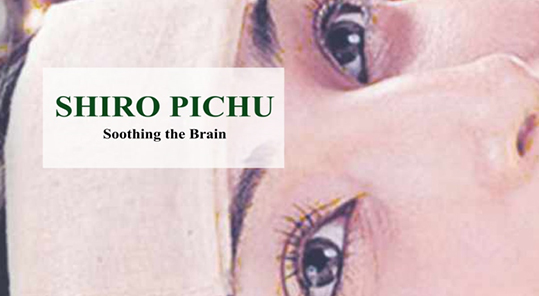
The word 'Shiro Pichu' is derived from two Sanskrit words - 'shiro' meaning head and 'pichu' meaning a sterile cotton pad or a sterile cloth dipped in medicated herbal oils. The treatment is known to calm the nerves and brain. It is very effective in curing many psychosomatic illnesses, migraine headache, memory loss, insomnia, premature greying of hair and neurological disorders like paralysis and facial palsy.
Duration: 45-60 minutes
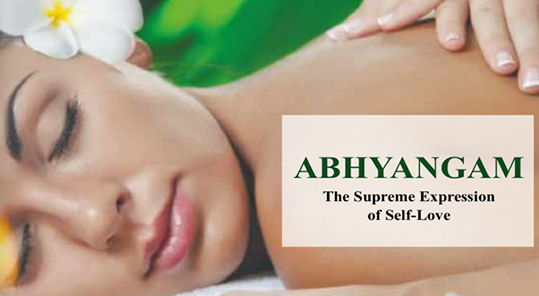
It is believed that the effects of Abhyangam are similar to those received when one is saturated with love. Abhyanga is infusing the body with 'prana' or vital life force. When we infuse all our calls with love, they are revitalized and energized. It involves massaging of the body with warm oil infused with healing herbs and balancing essential oils. Abhyangam moves 'Prana' (vital life force energy) within the body thereby nourishing and revitalizing all body organs. Its rhythmic motion helps to relieve joints and muscles from stiffness. This stimulating treatment aids the removal of toxins and stimulates both arterial and lymphatic circulation. It increases blood circulation, which in turn encourages quick removal of metabolic wastes, while providing relief to diseases such as anxiety, fatigue, circulatory disorders, arthritic problems, backaches and injuries
Duration: 45-60 minutes
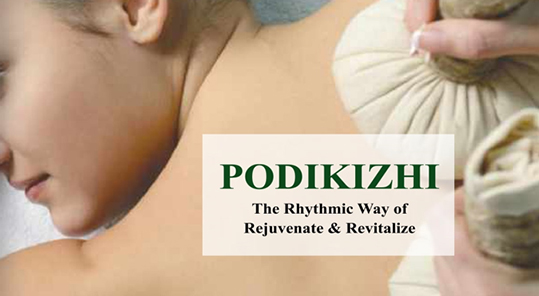
Podikizhi or churna pinda sweda is an Ayurveda technique of fomentation in which the whole body or certain parts of the body are fomented and made to sweat, by the application of medicinal powders. 'Churna'means course or fine powder made of medicinal herbs. 'Pinda' means a bolus and 'sweda' means fomentation. It is very effective in treating kapha-vata' predominant conditions of arthritis, back pain, paralysis, gout, bursitis and muscular pains. This treatment is useful for relieving deep seated tension, increasing blood circulation, loosening built up toxins, strengthening muscle tissue and ridding the body of excess Kapha. This treatment increases blood supply to the skin and improves skin luster and complexion and eliminates toxins through skin pores.
Duration: 30-45 minutes
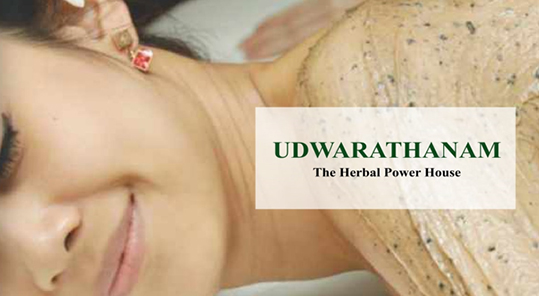
Podikizhi or churna pinda sweda is an Ayurveda technique of fomentation in which the whole body or certain parts of the body are fomented and made to sweat, by the application of medicinal powders. 'Churna'means course or fine powder made of medicinal herbs. 'Pinda' means a bolus and 'sweda' means fomentation. It is very effective in treating kapha-vata' predominant conditions of arthritis, back pain, paralysis, gout, bursitis and muscular pains. This treatment is useful for relieving deep seated tension, increasing blood circulation, loosening built up toxins, strengthening muscle tissue and ridding the body of excess Kapha. This treatment increases blood supply to the skin and improves skin luster and complexion and eliminates toxins through skin pores.
Duration: 45-60 minutes
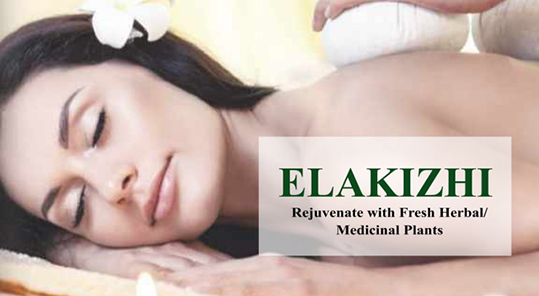
Elakizhi or Patrapotala Sweda is a rejuvenating sudation practice in Ayurveda treatments using fresh leaves of herbal/medicinal plants. Anti- vata plants, such as Eranda (Ricinus communis), Arka (Calotropis Procera), Nirgundi (Vitex negundo), Rasna (Pluchea lanceolata), coconut leaves, lemon and curcumin are fried with herbal ingredients and tied into cloth bolases. These are dipped into warm medicated oil and used for massaging the body. The massage with heated boluses induces profuse sudation, which helps in the fomentation process. Elakizhi is effective for various kinds of arthritis, spondylitis, back pain, sports injuries and all other soft tissue inflammations especially joint pains. The massage promotes better blood circulation within the affected area and induces perspiration which helps the skin to eliminate wastes.
Duration: 45-60 minutes
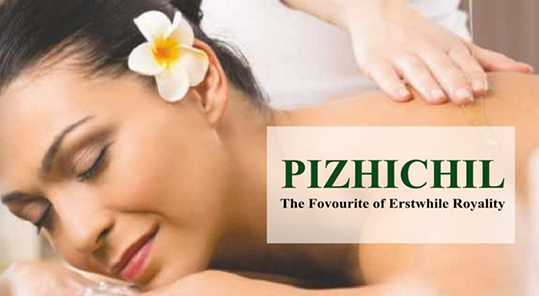
Pizhichil literally means squeezing. Pizhichil is one the most popular Ayurvedic therapeutic treatments favored by the royal families and aristocrats of yore. The whole body is bathed in streams of lukewarm medicated oil and the patient is massaged simultaneously by two to four therapists, continuously in a special rhythmic way. The procedure is followed by a medicated steam bath. This: is a highly rejuvenating treatment that enhances muscular tone and energizes the entire nervous system. It helps to eliminate toxins from the body, improves blood circulation and revitalizes all organs. It is very useful for rheumatic diseases, arthritis, paralysis, sexual weakness, neurological disorders, blood pressure, nervous weakness and helps to arrest the ageing process.
Duration: 60 90 minutes
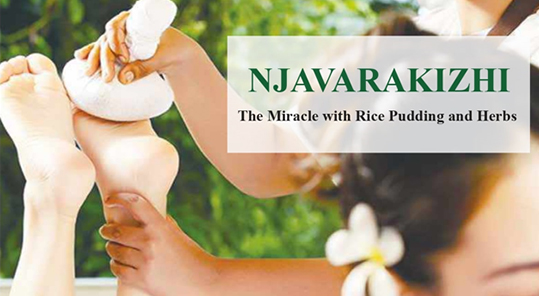
Njavara' is an indigenous variety of rice grown in Kerala, having medicinal properties. In this therapy, the body is made to perspire using Njavara and other herbal medicines. A special type of rice called Njavara is cooked in milk and herbs. This herbal decoction is packed in small cotton boluses which are used to massage the body with a rhythmic pressure till it begins to sweat profusely. This treatment rejuvenates and revitalizes all internal organs, makes the body sup- pler, slows the ageing process, improves luster and texture of the skin, calms the mind and reduces stress. It also promotes sound sleep, develops the muscular system, cures rheumatic troubles, boosts the immune system, pacifics vata dosha and strengthens and nourishes the nervous system.
Duration: 60-90 minutes
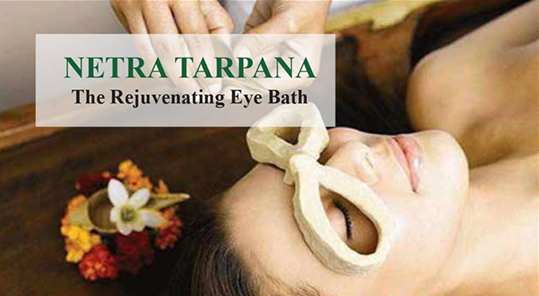
The term Netra tarpana is derived from two words- 'netra' meaning the eye and "tarpana" meaning nourishment. Thus Netra Tarpana means nourishment for the eye. The treatment involves soaking the eyes in warm medicated oil. The treat- ment is given after other treatments so that the body's toxin levels are under con- trol. It acts as bath, a preventive and curative therapy for maintaining normal healthy condition of eyes. Netra Tarpana cools, lubricates and nourishes the eyes and expels impurities. It is used to treat refractive errors, cataract, glaucoma, chronic conjunctivitis, night blindness, corneal ulcers and dry eyes. It is very relaxing and improves vision and brightness of the eyes
Duration: 30 minutes
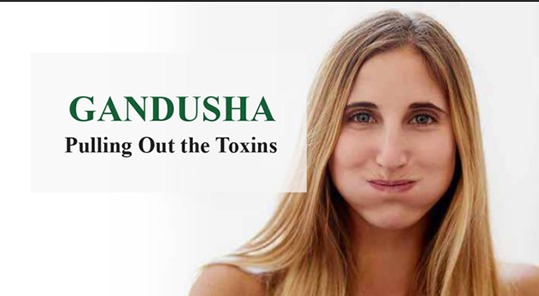
Gandusha is a Sanskrit term that means 'gargling" or "holding some liquid in the mouth." In this oral therapy, prescribed oils are swished in the mouth for 20 minutes for the purpose of cleaning the mouth and for other health benefits. This therapy supports the body's natural ability to remove toxins and also has the following benefits:
- Prevents tooth decay and gum disease
- Cures bad breath
- Boosts energy
- Removes mucous
- Clears sinuses
- Supports the immune system
- Decreases inflammation
- Reduces headaches
Duration: 20 minutes
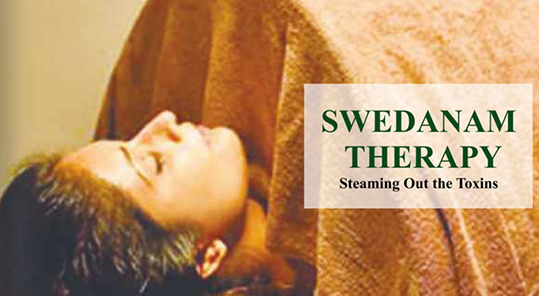
Procedure: The therapists induce sweat in the following ways
- Sagni Sweda: In this process, sweat is induced through direct application of heat on the skin, by using steam. The therapist may use a 'nadi' or tube, through which steam from an herbal water decoction (boiling in a covered vessel) is applied to the body parts.
- Baspa Swedana: In this therapy; the full body is given a medicated steam bath by making the patient sit/ lie inside a steam chamber to induce sweating.
- Tapa Sweda: In this therapy, sweat is induced through the direct application of heat. Substances such as cotton cloth, sand or bricks are heated and then applied to the body parts.
- Upanaha Sweda: In this process, hot poultices with or without oil, wet or dry, or containing substances like salt, flour, wheat, oil or herbs, are applied firmly to a particular area of the body repeatedly to induce sweating. The earlier mentioned Pizhichil treatment belongs to this category.
- Avagaha Sweda: In this procedure, the person is made to sit in a bathtub filled with a warm medicated decoction for about 20 minutes. The level of the decoction in the tub can be up to the navel region or the neck depending upon the condition of the patient. This therapy is useful in treating many Vata disorders.
In all of the above treatments, the patient is advised to rest along with light meals and take a hot shower after an hour or two of undergoing the treatment.
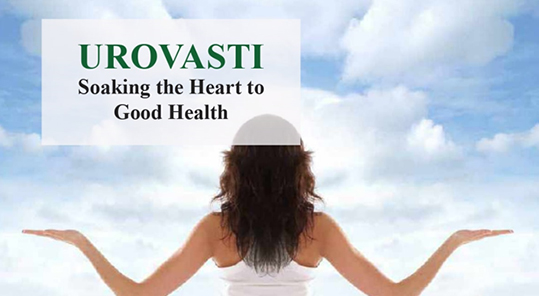
The term Uro Vasti is derived from two Sanskrit words- 'Uro' meaning chest and 'Vasti' which means retaining something inside. It is also called 'Hridaya Vasti,' derived from the word 'Hridaya' meaning heart as it is used to strengthen the heart. In this therapy, medicated oil is retained on the chest wall to strength- en and cleanse the heart chakra and the muscles around it. It is very useful in treating coronary heart diseases and other respiratory disorders. It rejuvenates the heart and improves circulation and breathing functions. It also provides relief to chronic stress and anxiety.
Duration: 45-60 minutes
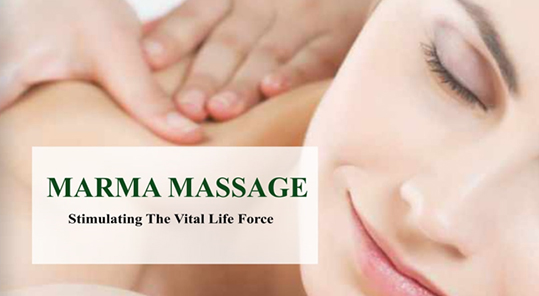
The term Uro Vasti is derived from two Sanskrit words- 'Uro' meaning chest and 'Vasti' which means retaining something inside. It is also called 'Hridaya Vasti,' derived from the word 'Hridaya' meaning heart as it is used to strengthen the heart. In this therapy, medicated oil is retained on the chest wall to strength- en and cleanse the heart chakra and the muscles around it. It is very useful in treating coronary heart diseases and other respiratory disorders. It rejuvenates the heart and improves circulation and breathing functions. It also provides relief to chronic stress and anxiety.

A consistent Yoga practice is a great way to detoxify and keep the body stress free on a regular basis. Yoga helps individuals in reconnecting to their own body which is the first step towards keeping it healthy. Yoga revitalizes the circulatory, lymphatic and digestive system thus building and enhancing our body's abilities to continue to eliminate toxins on their own, long after the treatments are done. In a well-rounded yoga regimen, every part of the body is pulled, twisted and massaged internally thus toning the internal organs and tissues and aiding them to function optimally. Yoga also activates the thyroid gland which controls metabolism. It is a well-known fact that an active and high metabolism helps in burning fat from the body at a faster pace and the fai wastes are eliminated faster when they are broken down more ably. Yogu asanas help in maintaining the pH of the body at a safe alkaline level which keeps the body clean. This hardened fat becomes toxic at later stage.Specific yoga poses focus on clearing the mind of all negative thoughts and stress. If the mind is see visible improvement in the long run. Yoga is a brilliant tool for effective stress management and increased body awareness. Stress reduction and mindfulness associated with yoga leads to improved sleep better eating habits and increased self-awareness, which in turn keep the body healthy Once the mind is at peace, the res of the organs function mare proficiendly and keep th body and mind in good shape
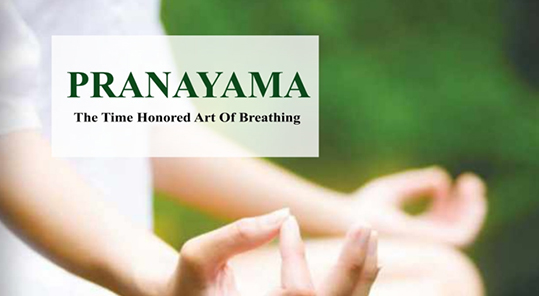
Developed over 5,000 years ago, pranayama (Sanskrit for 'vital energy') is an integral aspect of yogic practice. Pranayama are a series of specific yogic breathing techniques and exercises which help us detoxify, burn fat and increase metabolism. The breathing regimen clears out the stale, residual air in the lungs and saturates the cells with oxygen and prana/life force energy. Exhalation releases large amounts of carbon dioxide and toxins, thereby purifying the body. With the basic act of bringing in more oxygen, vitamins and minerals are more easily absorbed, white blood cells multiply and the lymphatic system is enhanced. Pranayama removes toxins from the bloodstream, which revitalizes the organs and clarifies the intellect, cakns emotions, oxygenates the blood, builds internal body heat and strengthens the nervous system. It improves the metabolic activity of the body and improves its overall functioning.
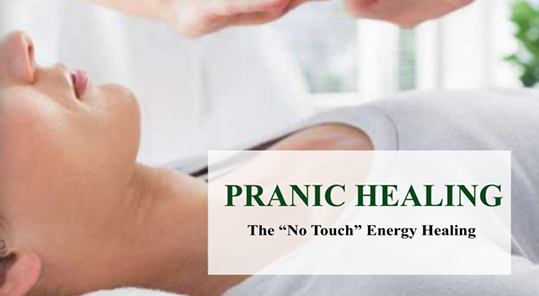
Pranic healing is a simple yet powerful and effective system of 'no-touch' energy healing. Pranic healing focuses on cleansing and energizing. Cleansing means removal of the diseased energy from the health aura and energizing means adding 'prana' or life energy to the affected area. It is based on the fundamental principles that the body is a self-repairing living entity that possesses the ability to heal itself and that the healing process is accelerated by increasing this life force that is readily available from the sun, air and ground within the recipient's body to address physical and emotional imbalances, Pranic experts focus on cleansing the Aura to achieve inner stillness and calm in those who are suffering from acute mental stress and depression.
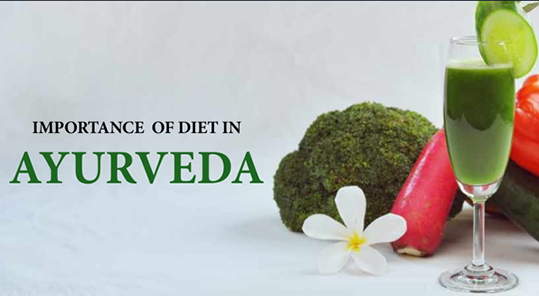
You are what you eat is a saying that is taken very seriously in Ayurveda. The name 'Ayurveda' originates from the two Indian words; 'Ayur,' meaning life, and ‘Veda' meaning knowledge or science. This oldest known 'Science of Life' stresses that our diet or' Ahara 'impacts both, our physical and emotional wellbeing and hence,is the first and foremost pillar of this science.
There is a 'sloka' (writings of the ancient texts of Ayurveda) that says "Food is medicine when consumed properly", and that improper diet produces toxin or 'ama' in the body which is the root cause of disease and ill-health. From the curative perspective, while diet alone may not be the cure for all diseases, its proper intake can keep ailments away and under control.
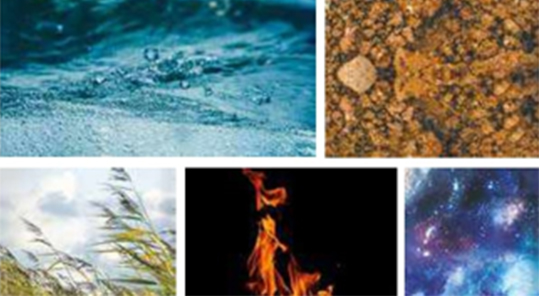
According to this theory, all matter in his universe is composed of five basic elements - the Panchamahabhootha, namely Earth (Prithvi), Water (Jala), Fire (Agni), Air (Vayu) and Space (Akasha). These elements are the building blocks of our world and can be found in everything around us in varying proportions. They combine in unique ways to create different environments a wide variety of flora and fauna including human beings. These five elements also compose the food that we consume and hence their understanding is significant in making effective diet and nutrition plans.
The human body and all flora and fauna around us are composed of the five elements or Panchamahabhootas. Derived from this, Ayurveda identifies three different Doshas or body types that have these five elements in varying proportions.
Vata is made up of Vayu (air) and Akasha (space) mahabhootha.Pitta is made up of Agni (fire) and Jala (water) mahabhoothas.Kapha is made up of Jala (water) and Prithvi (Earth) mahabhootha.Every individual's body composition has a different proportion of vata, pitta and kapha elements and this impacts his/her physical, mental, and emotional traits.
